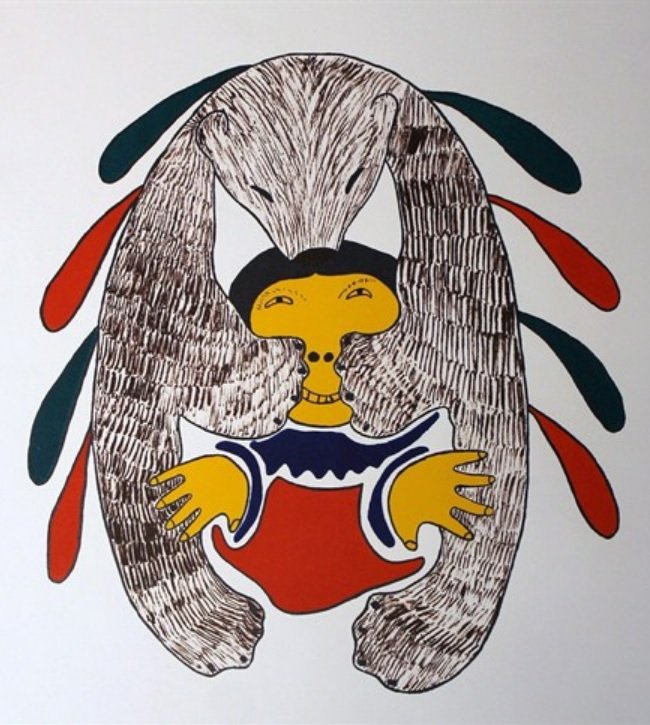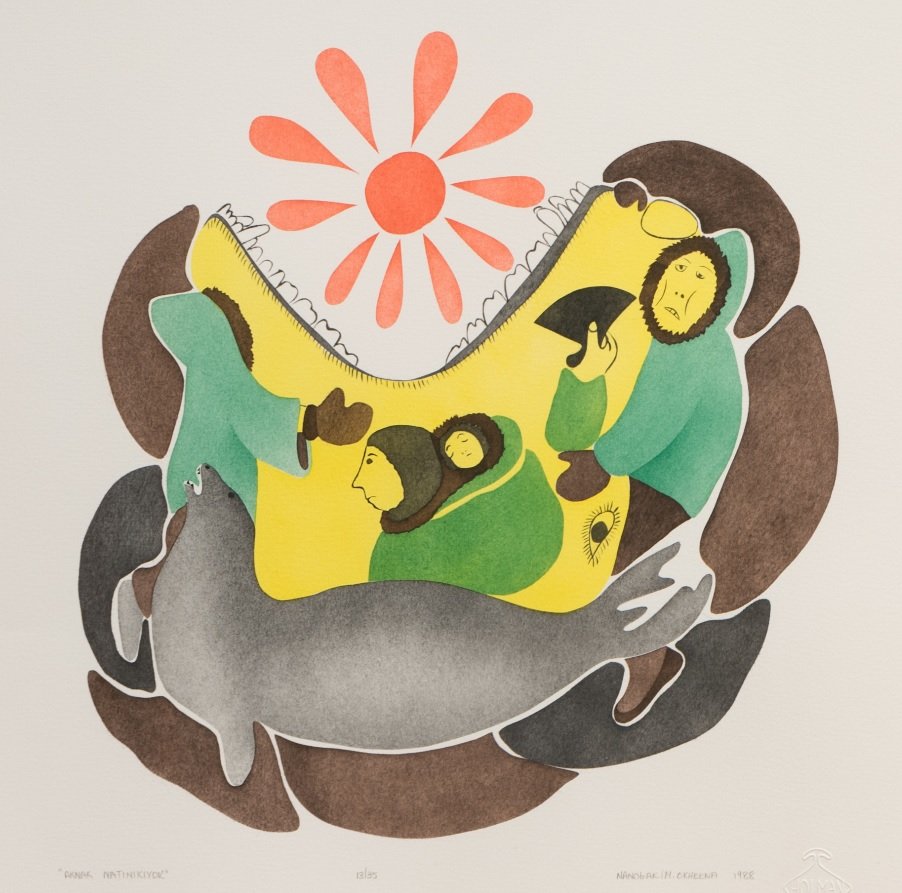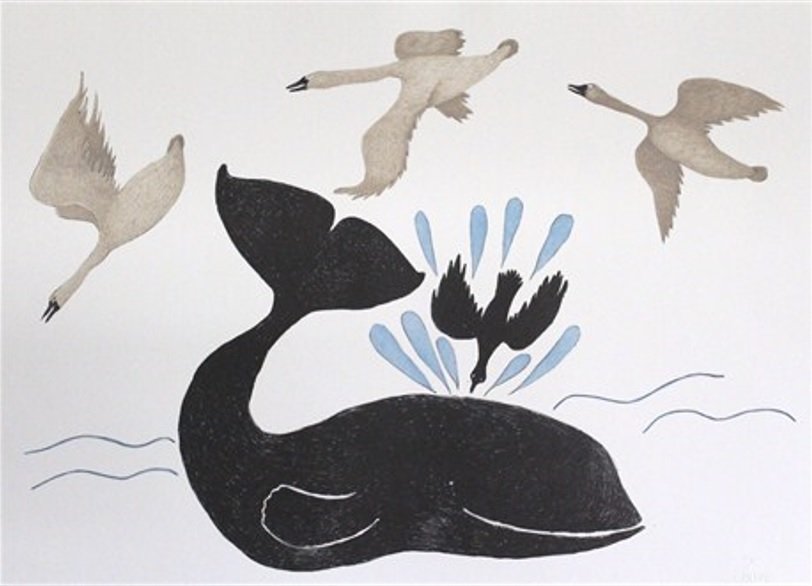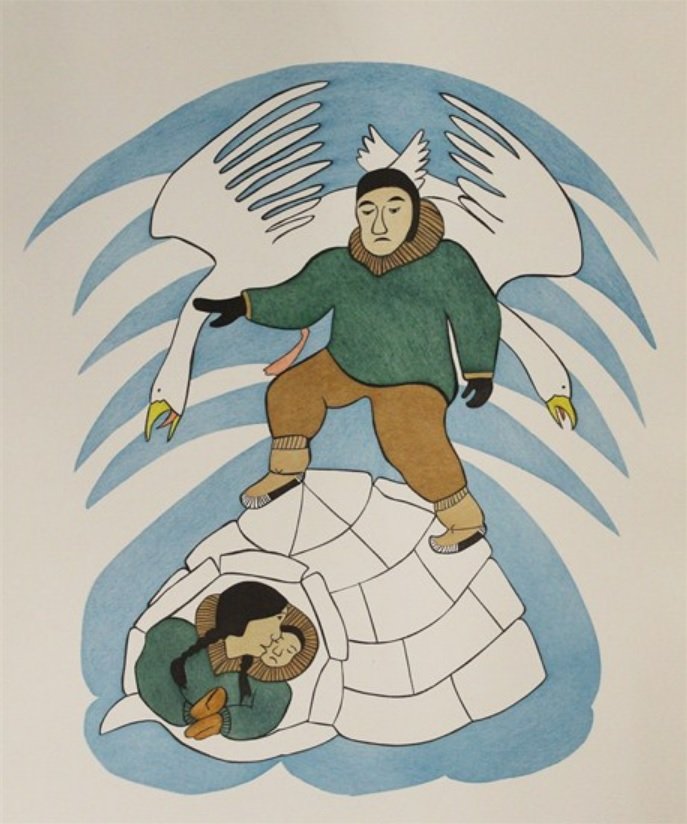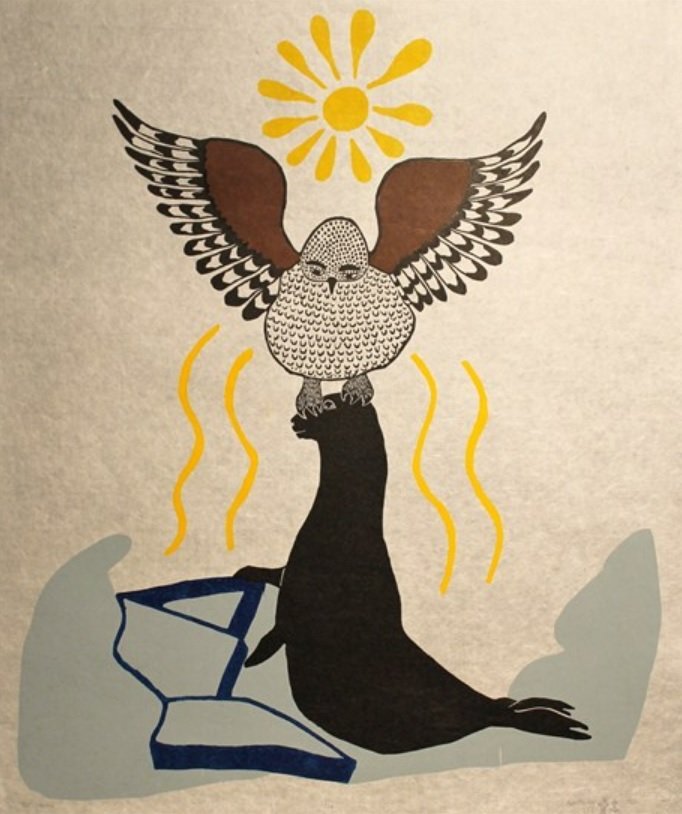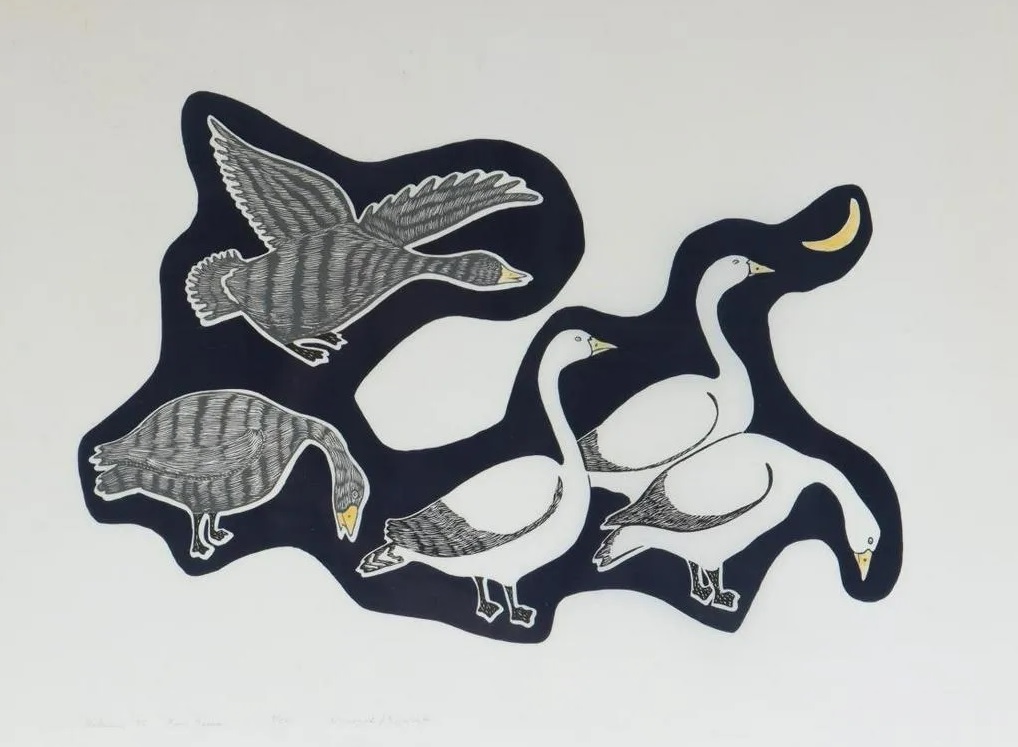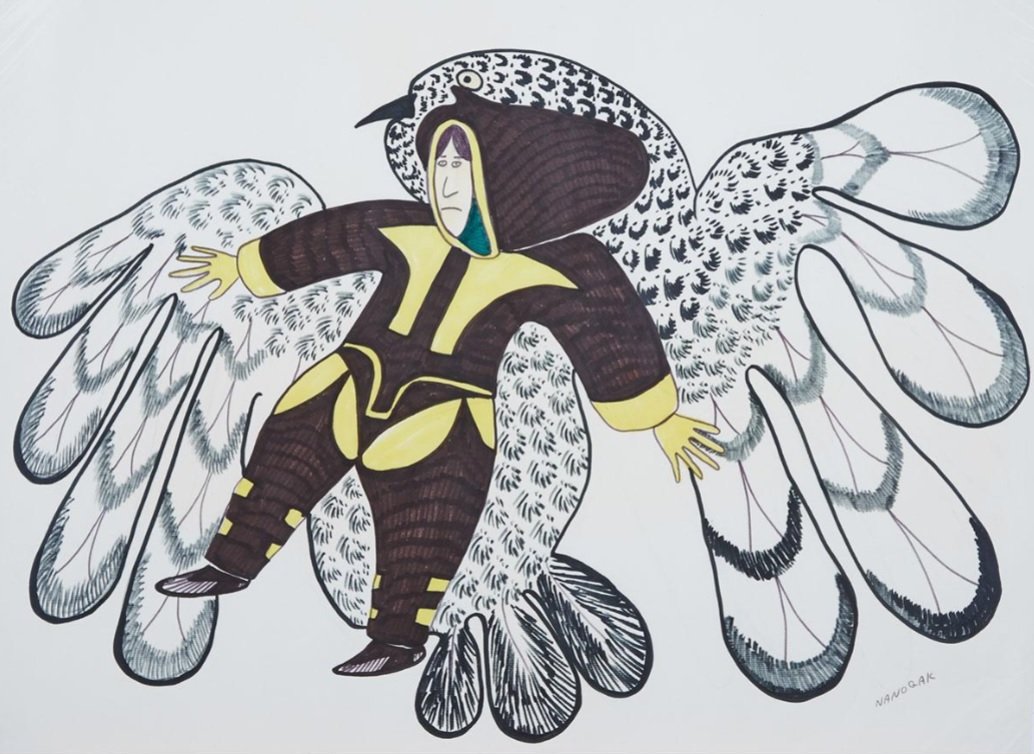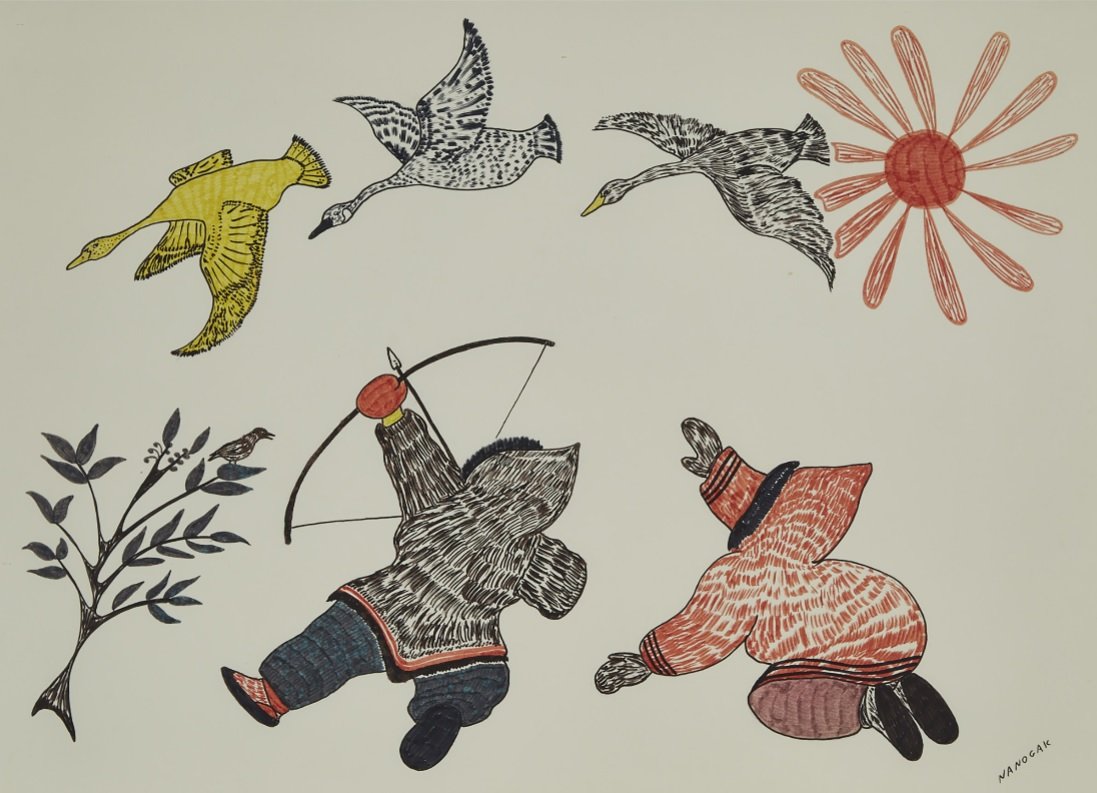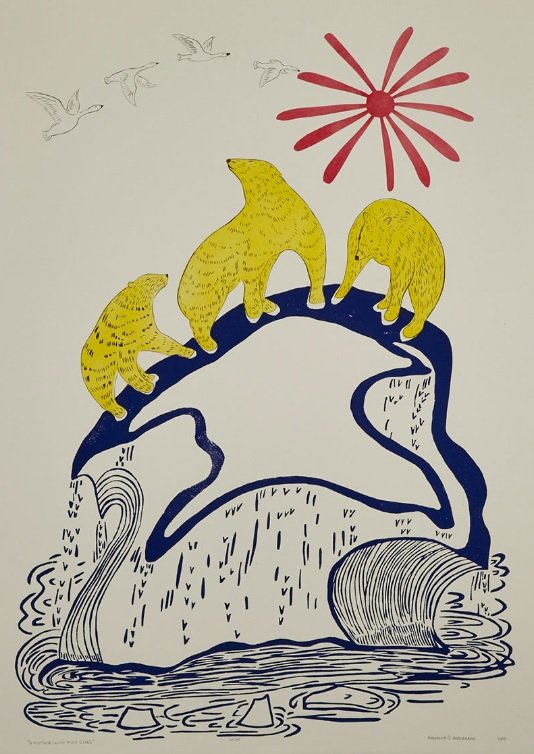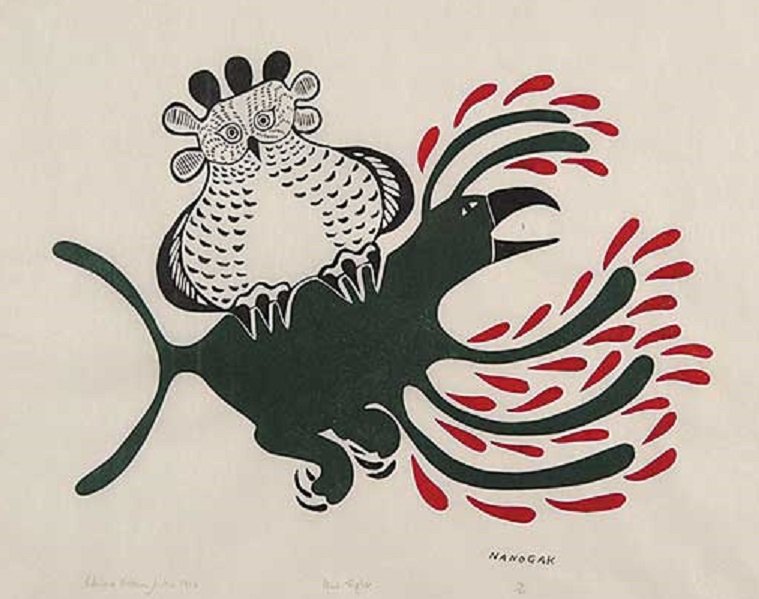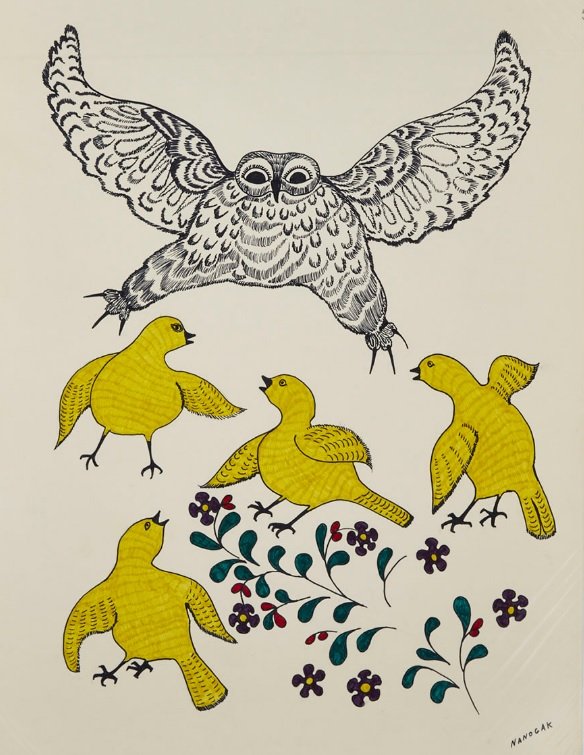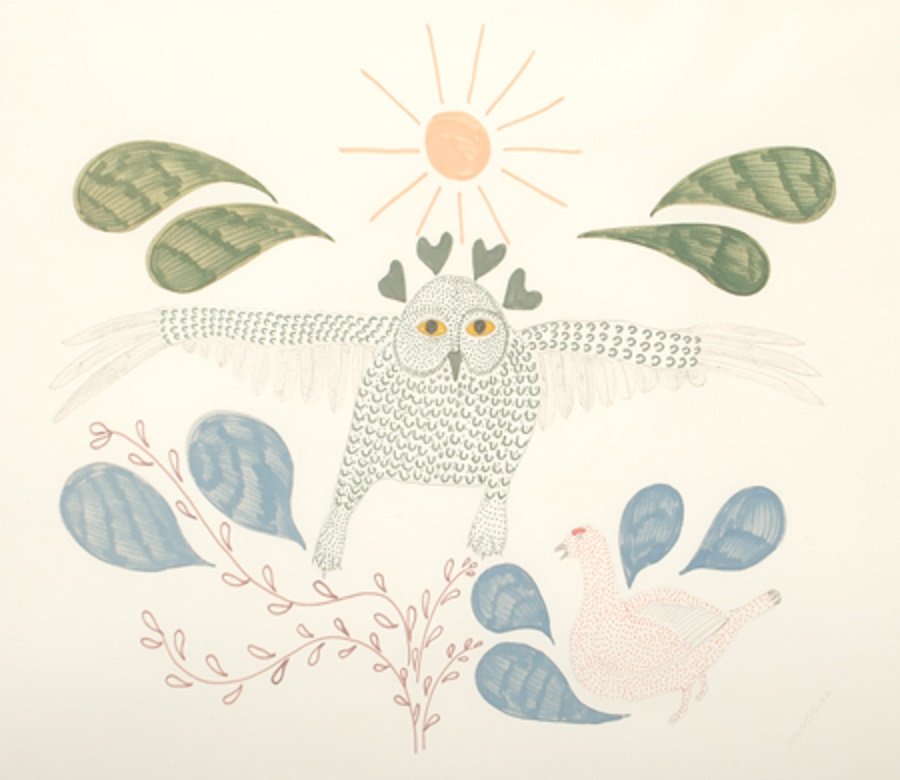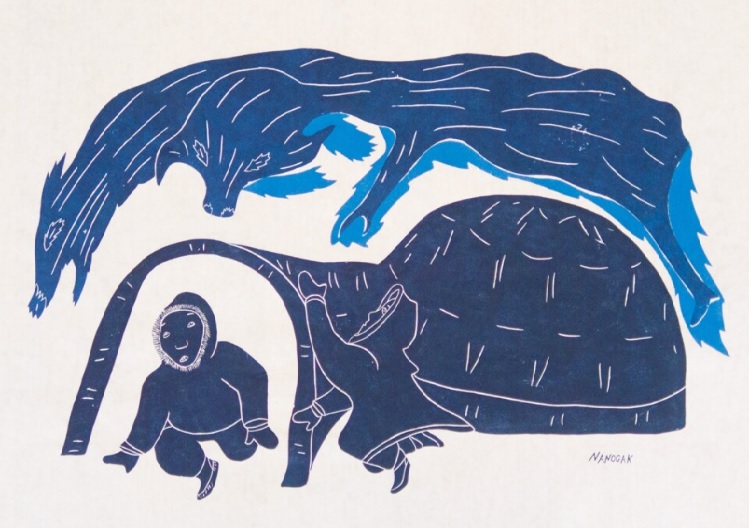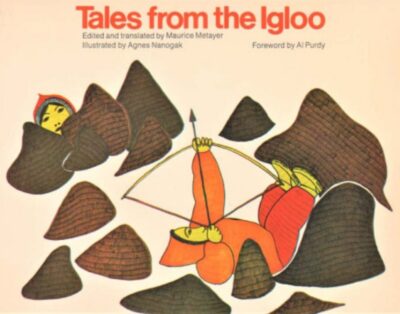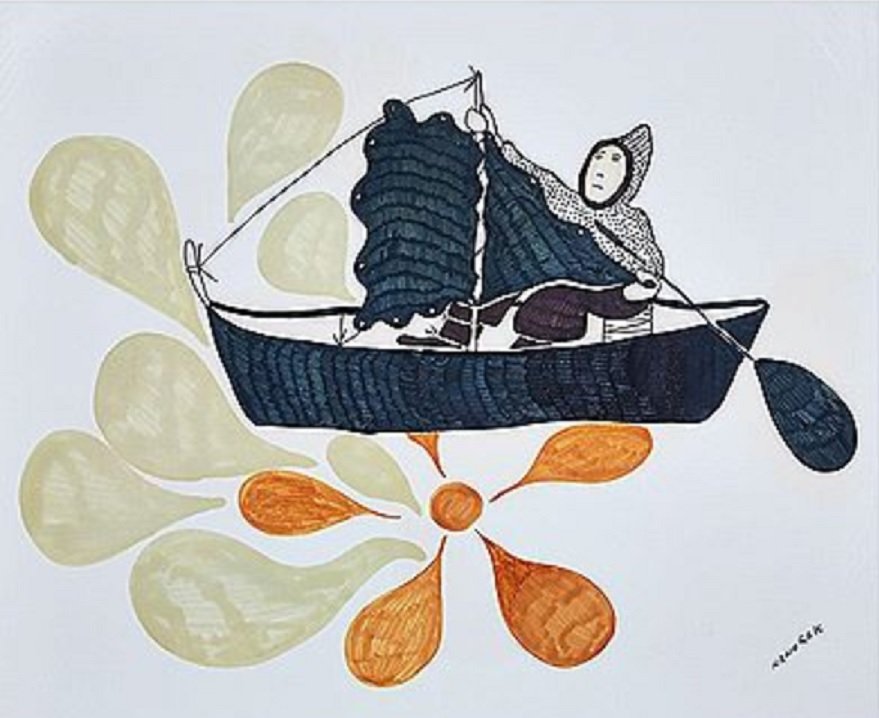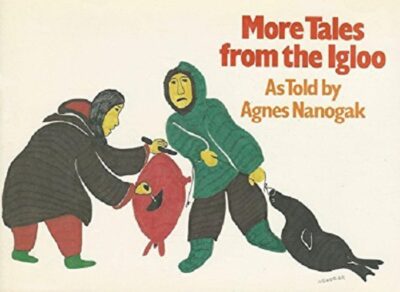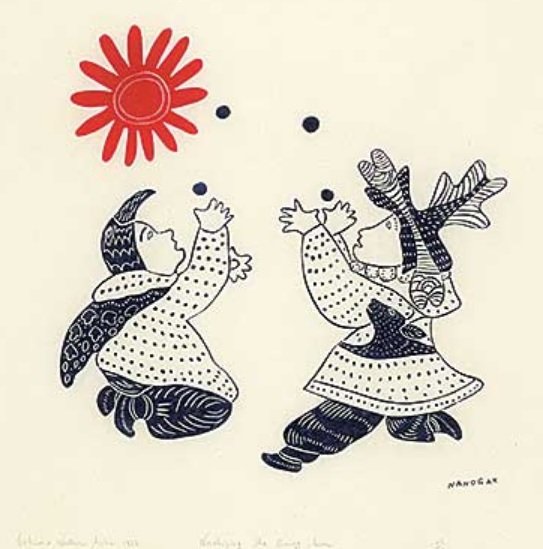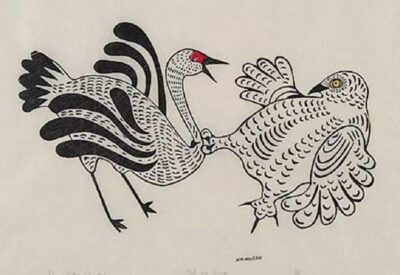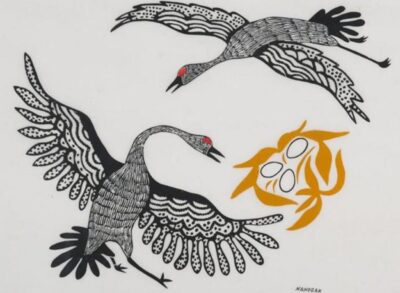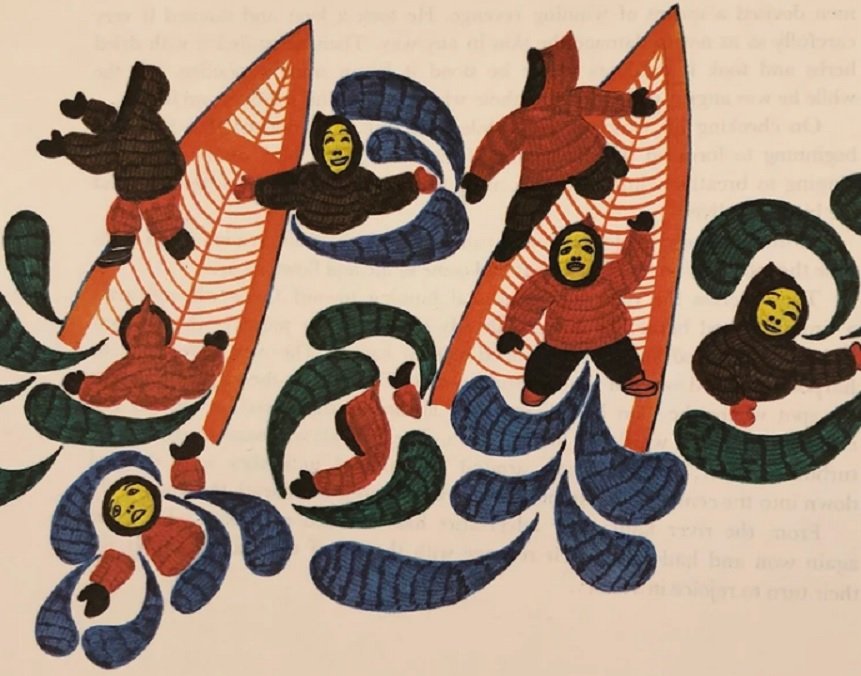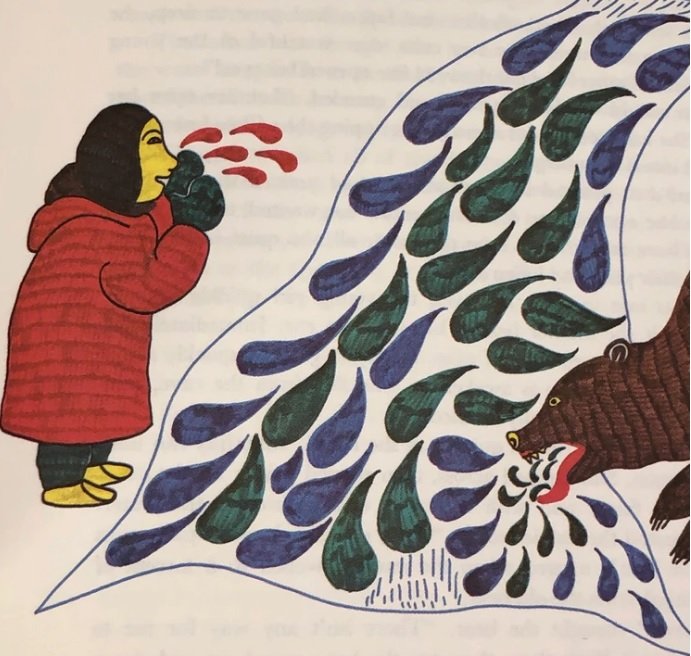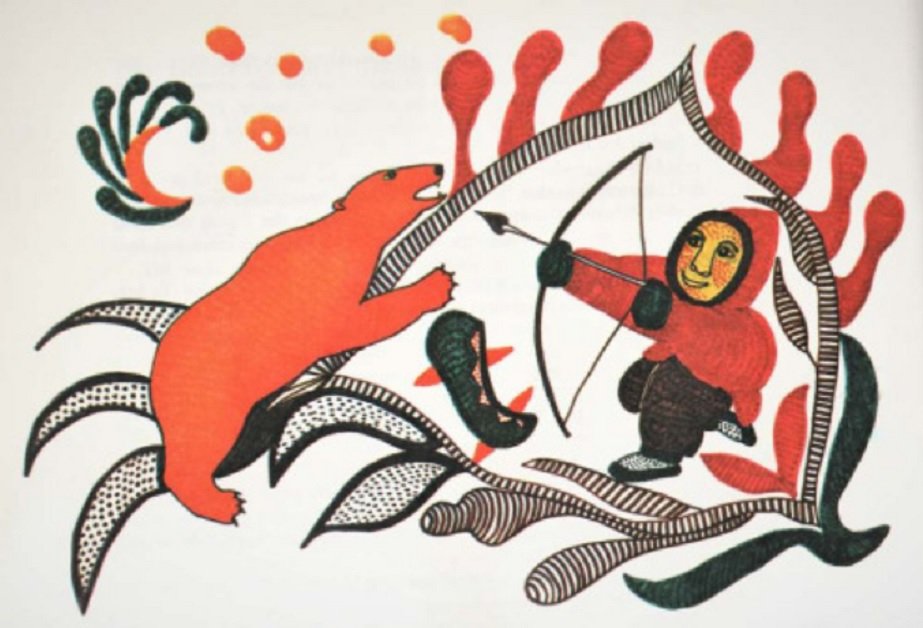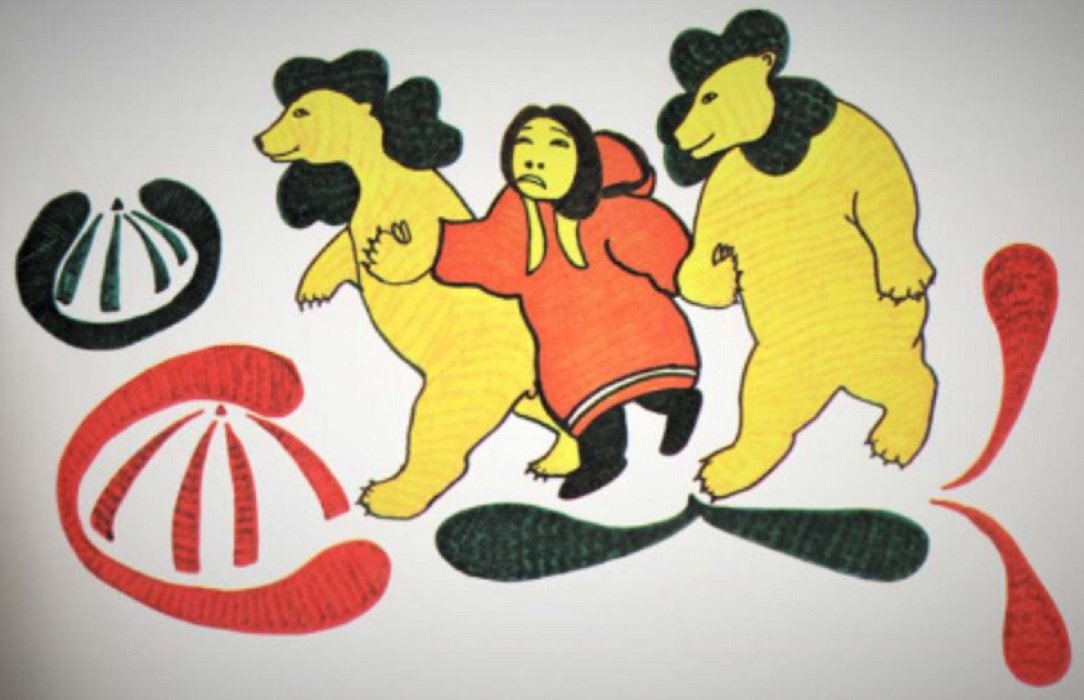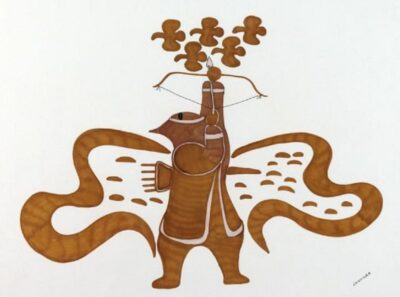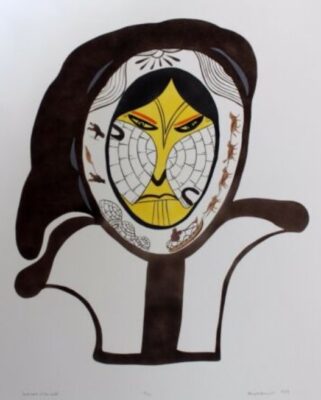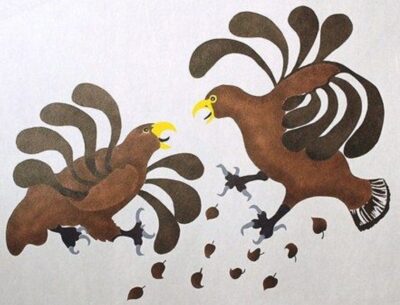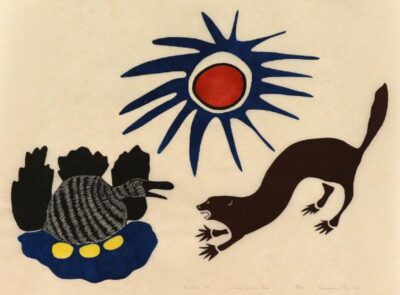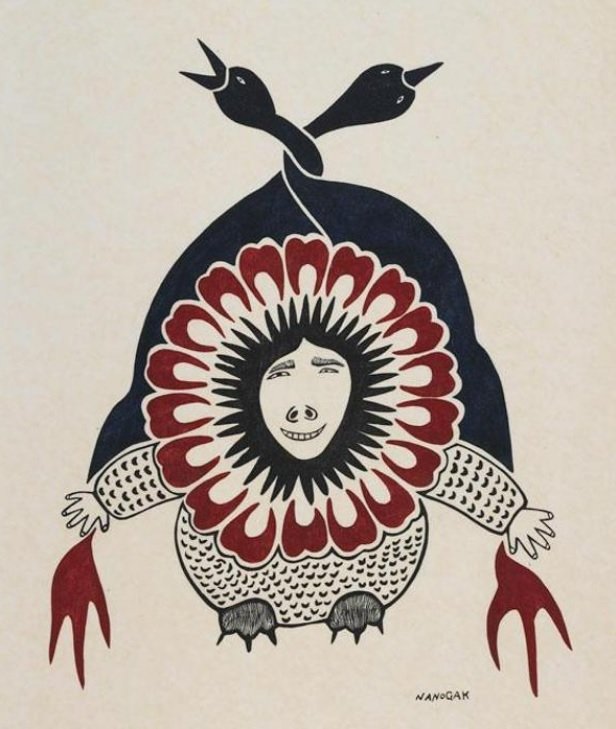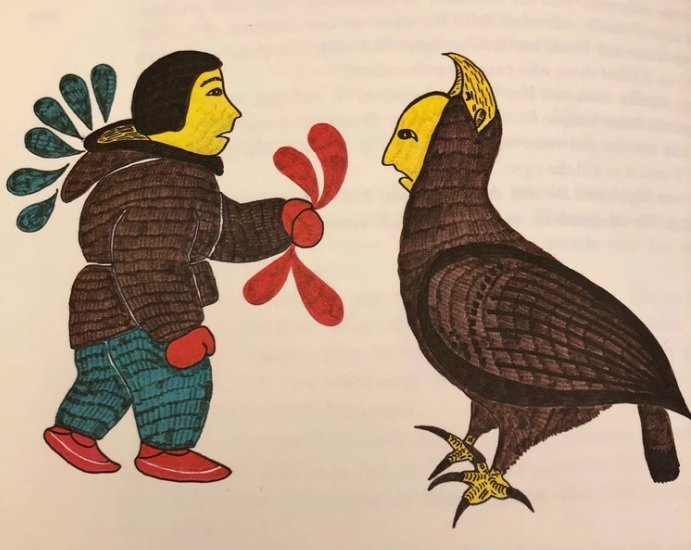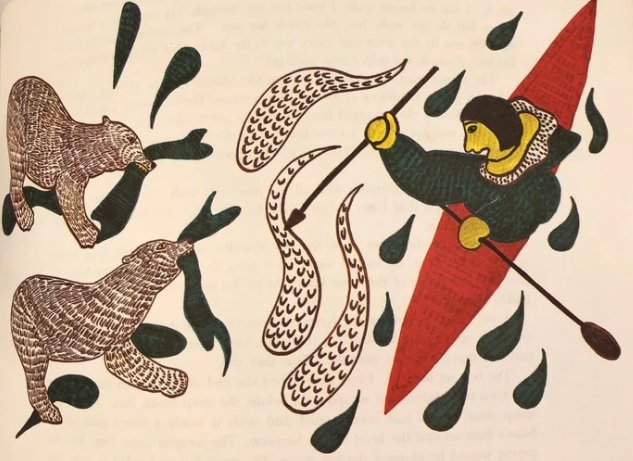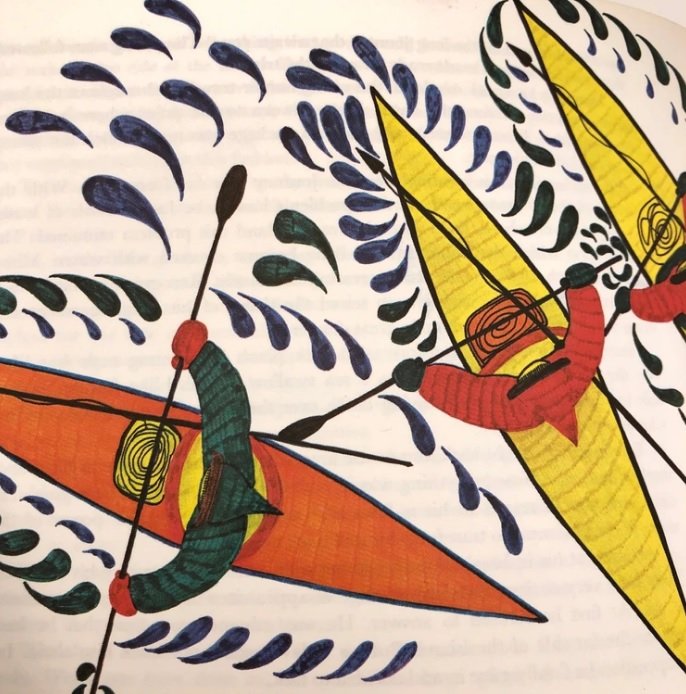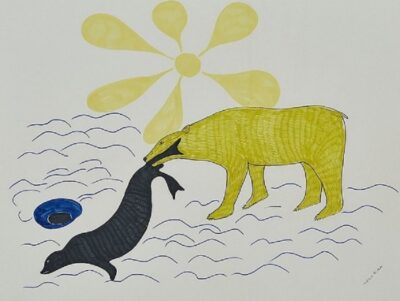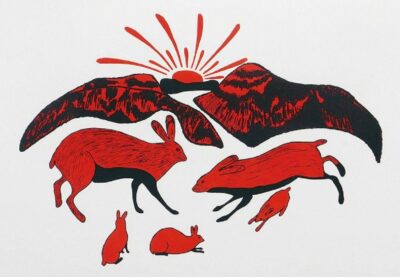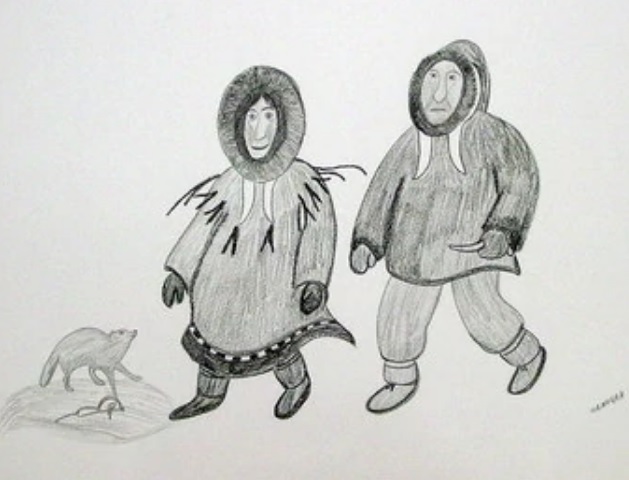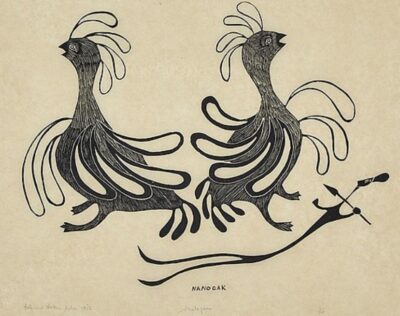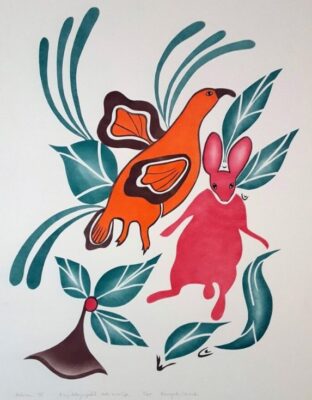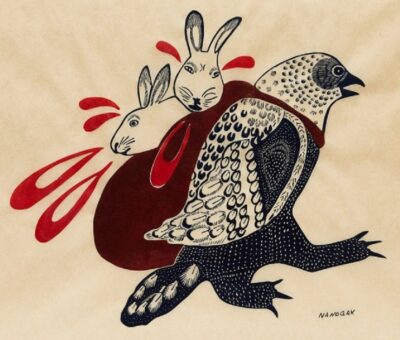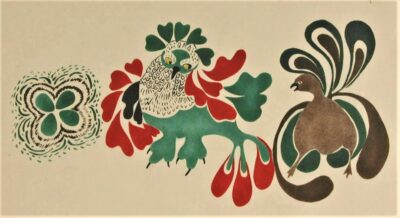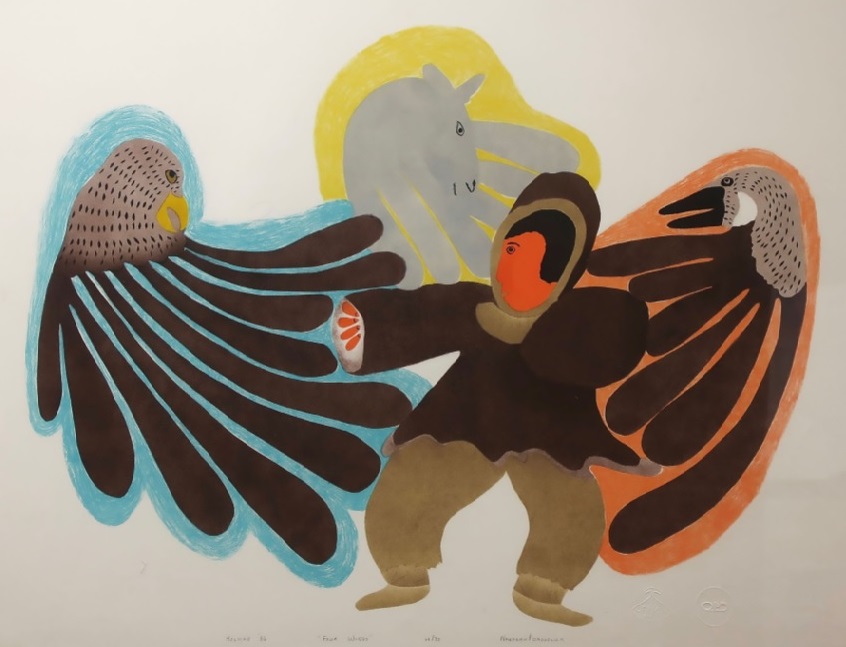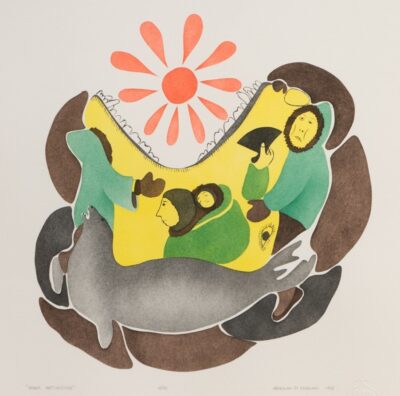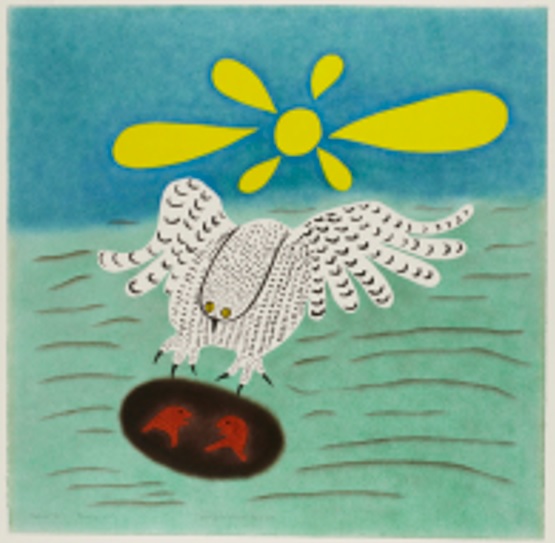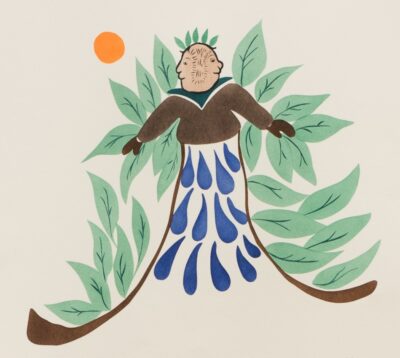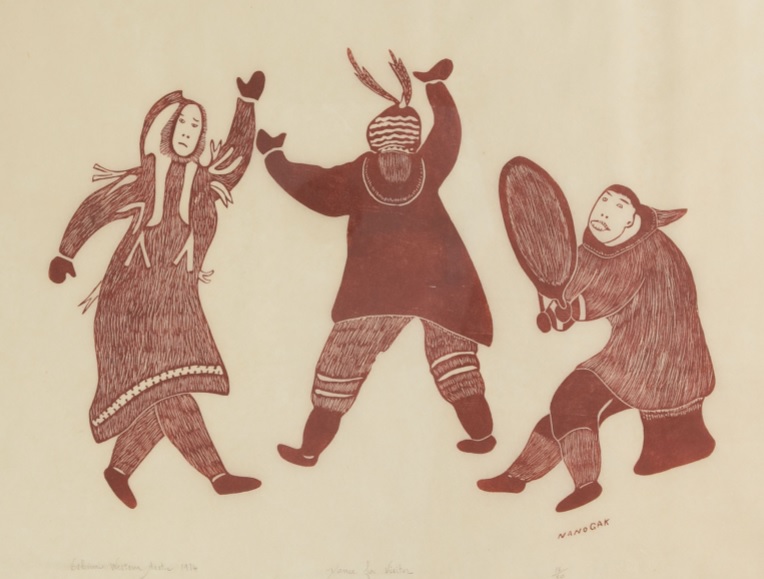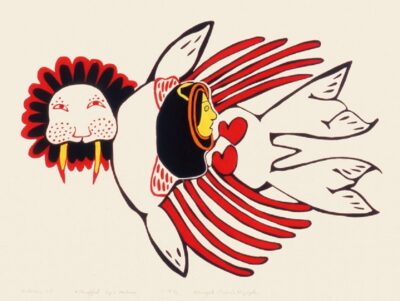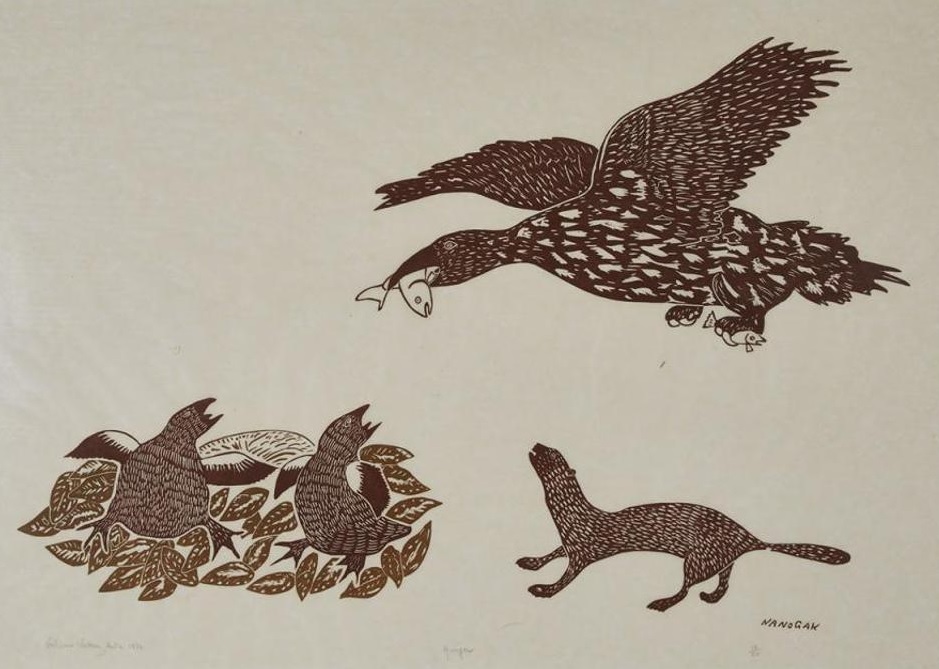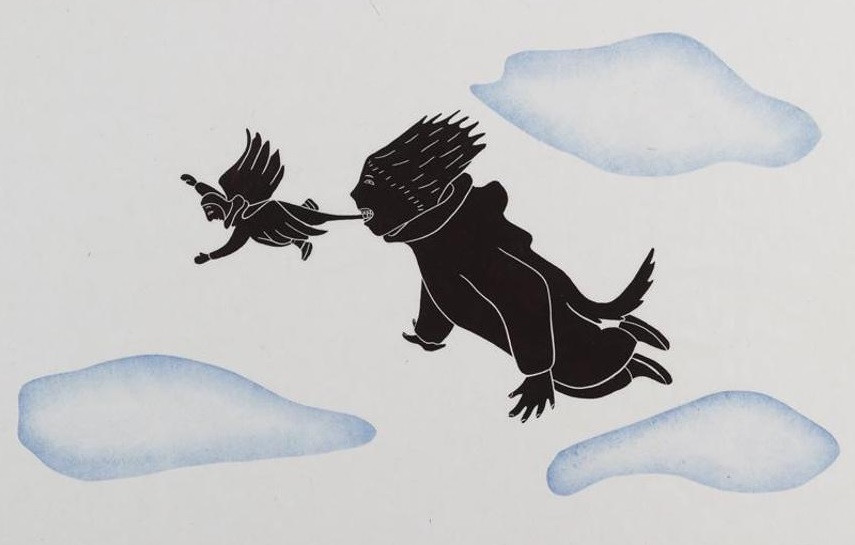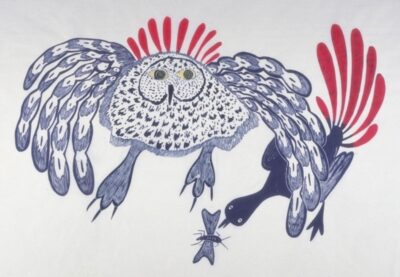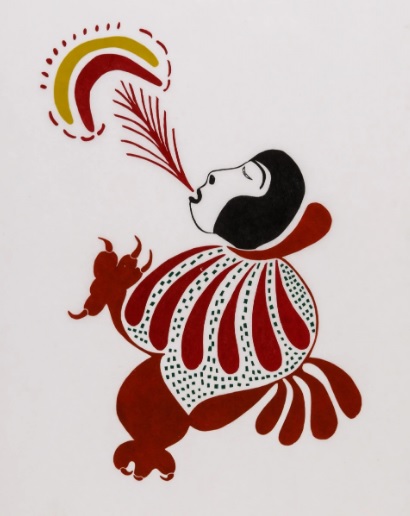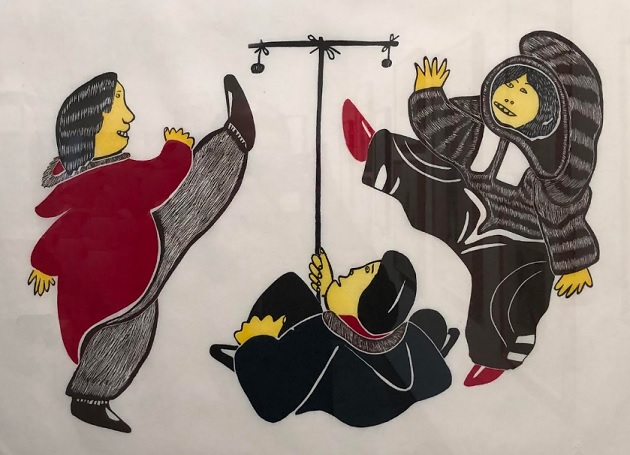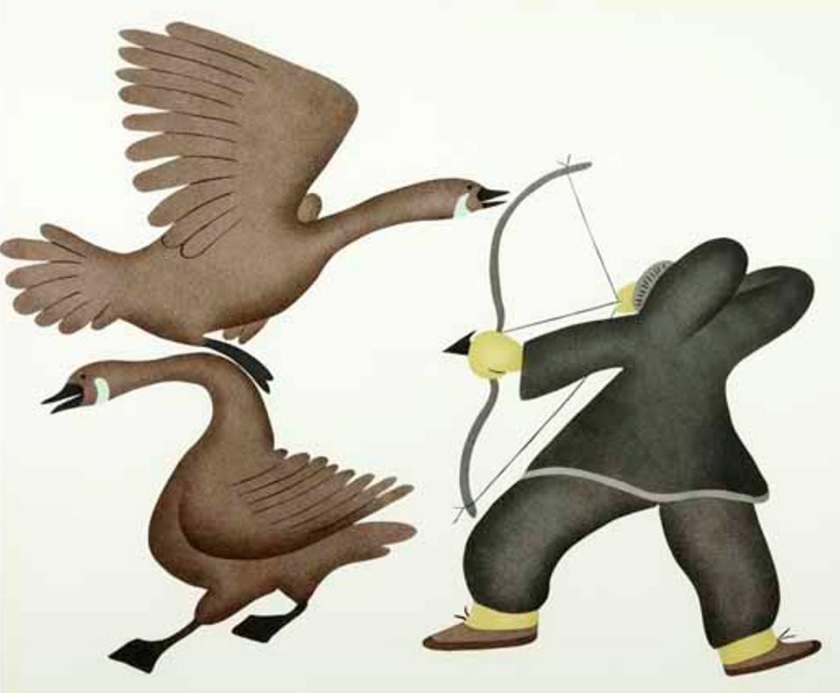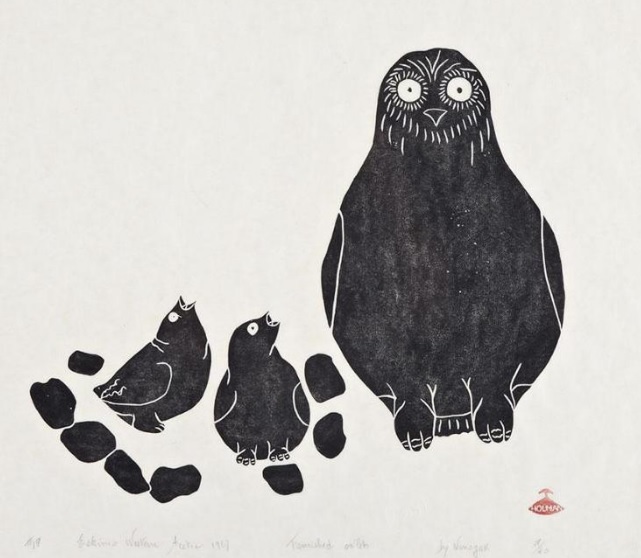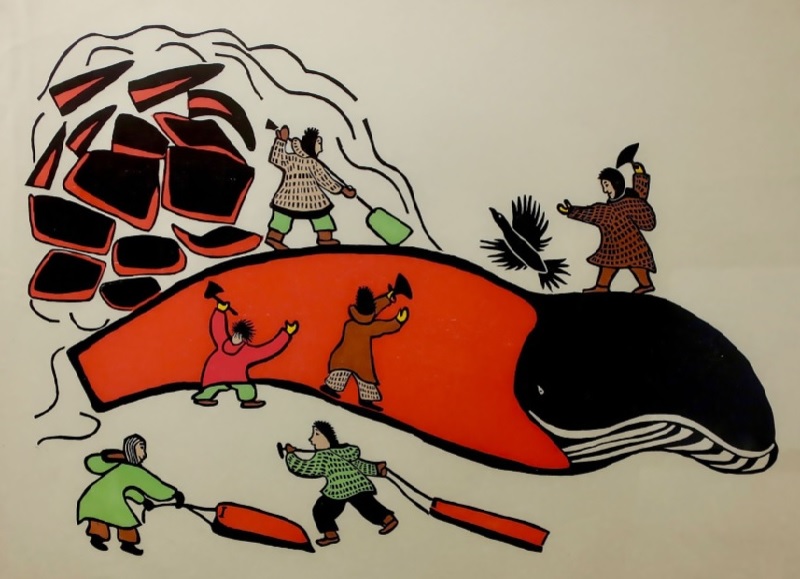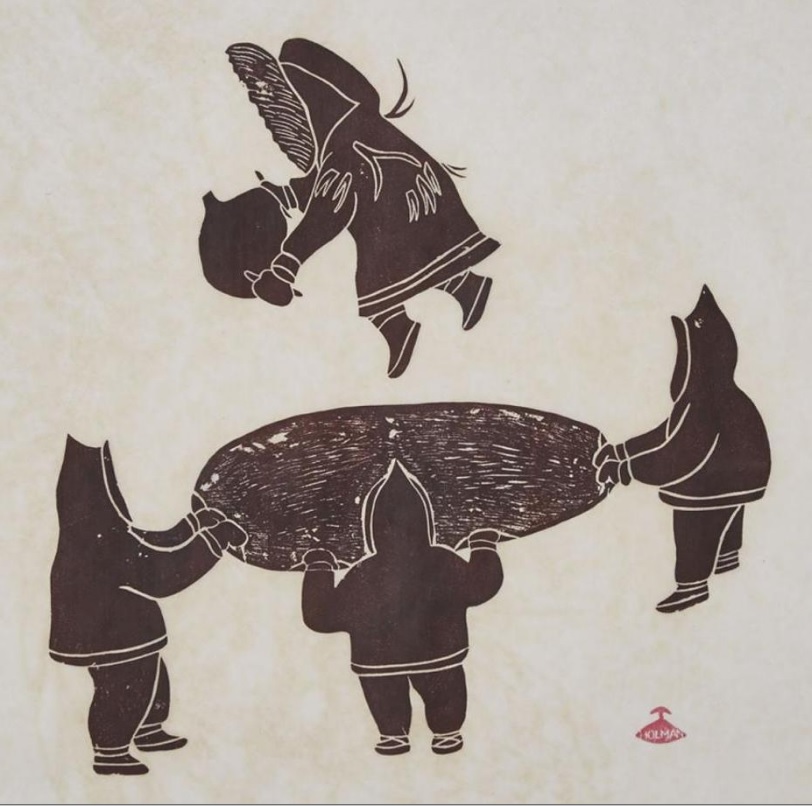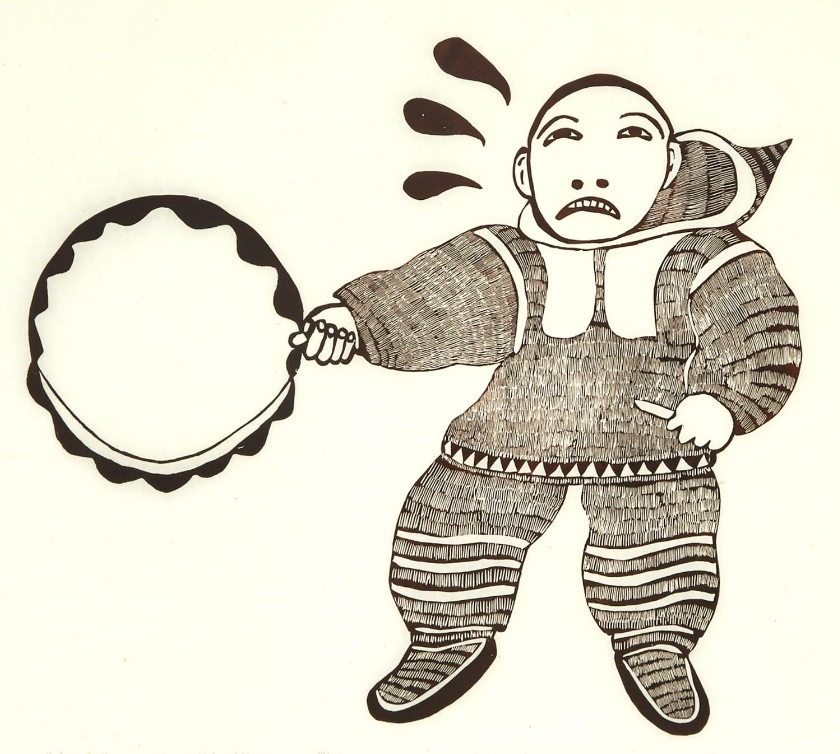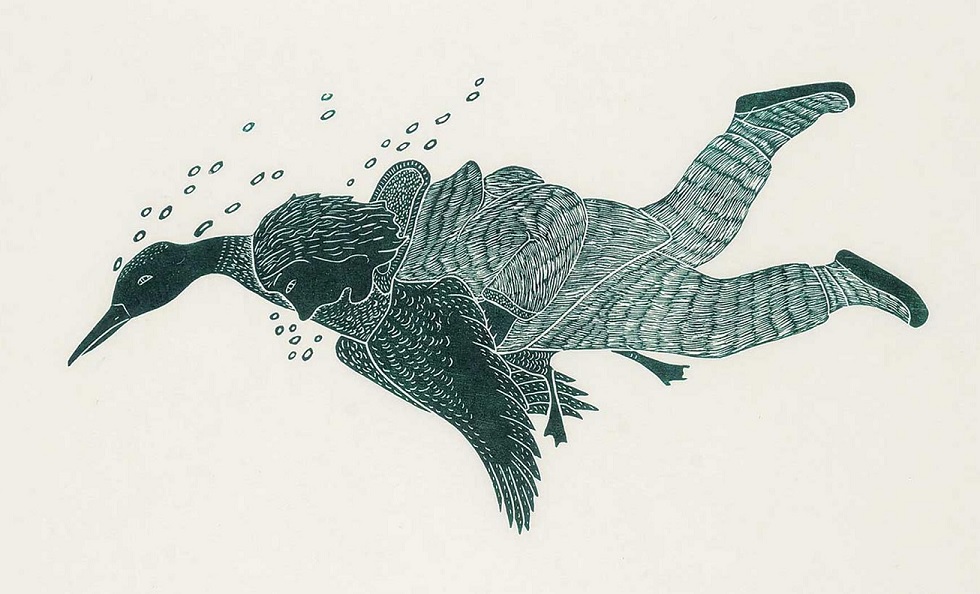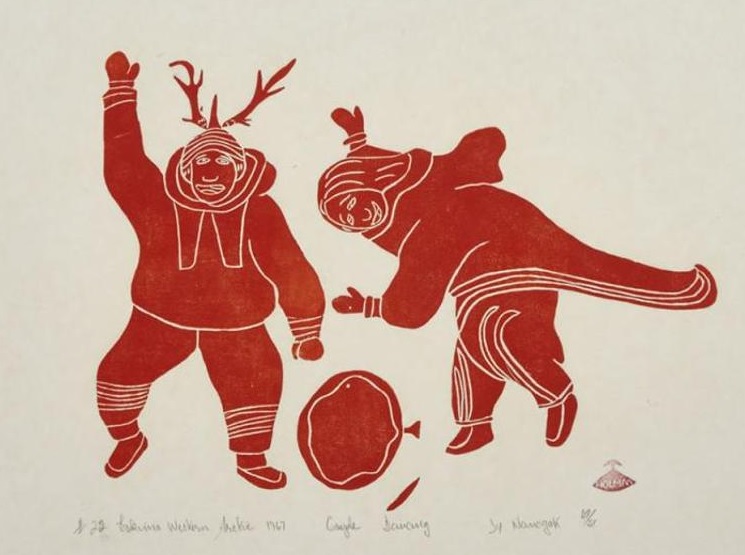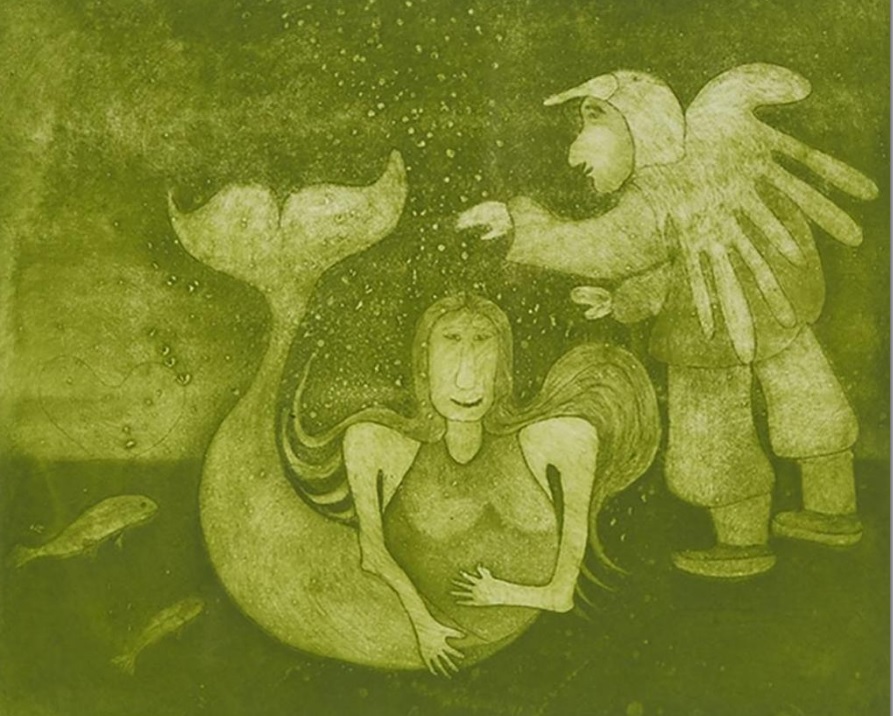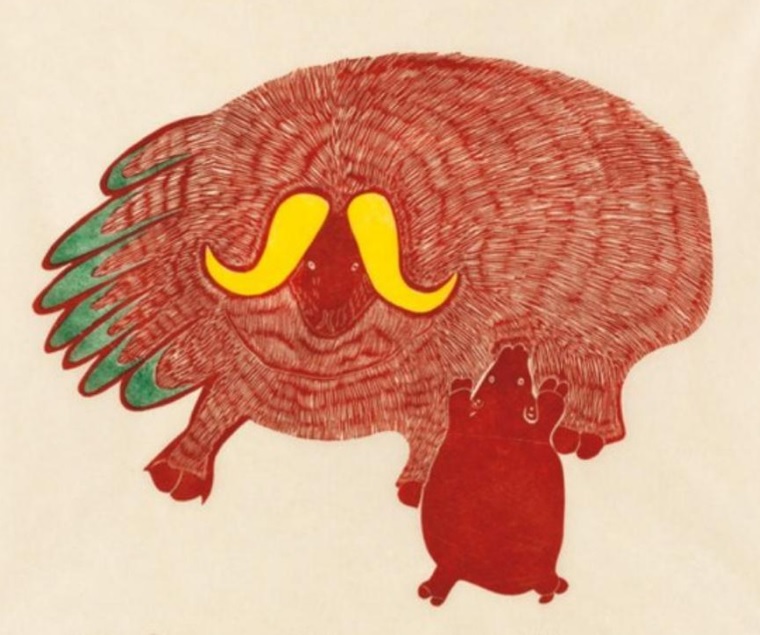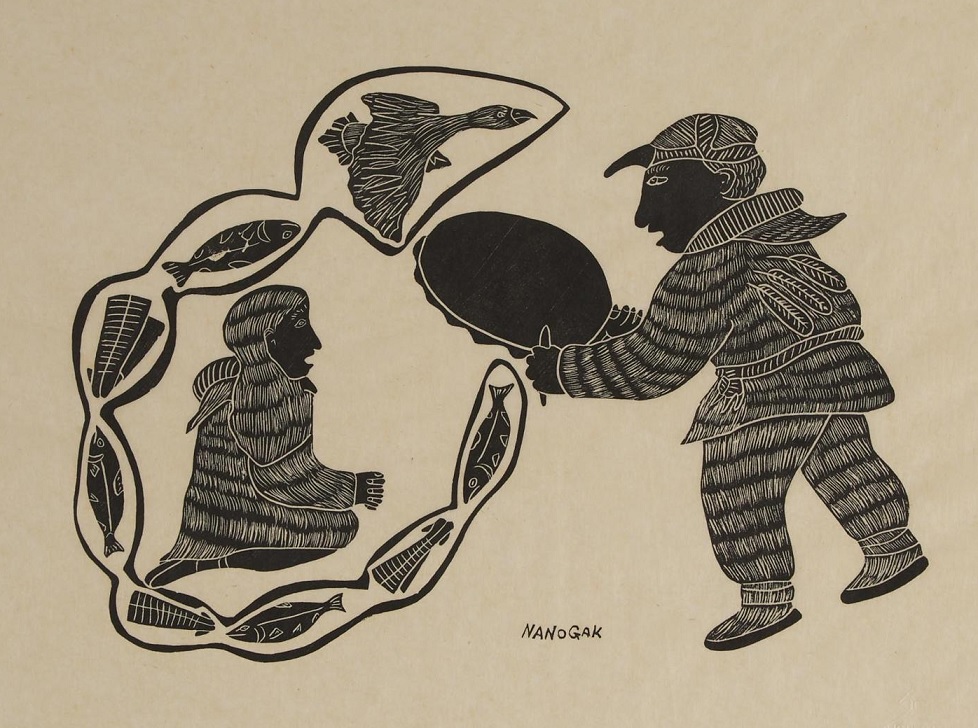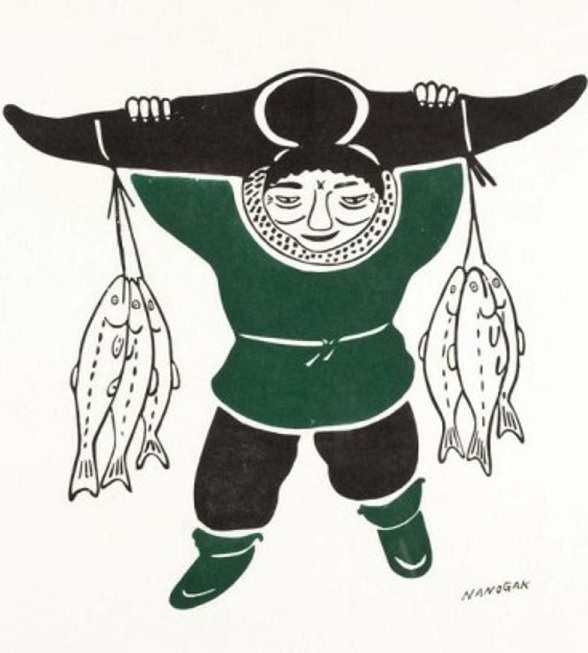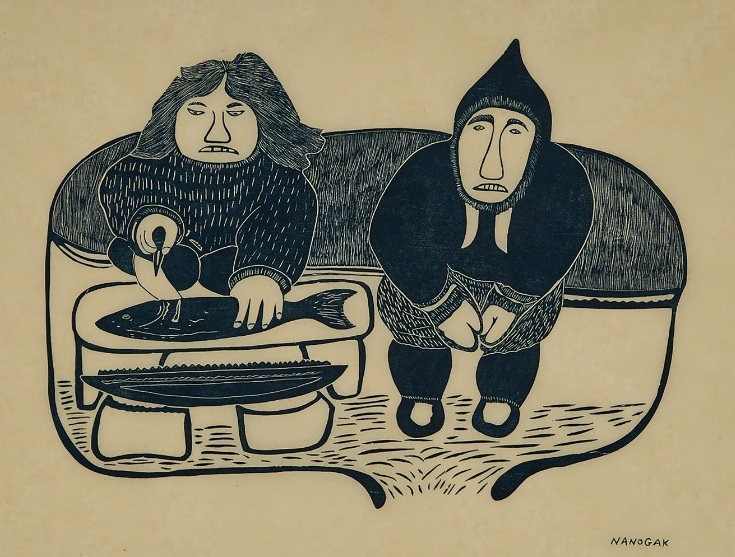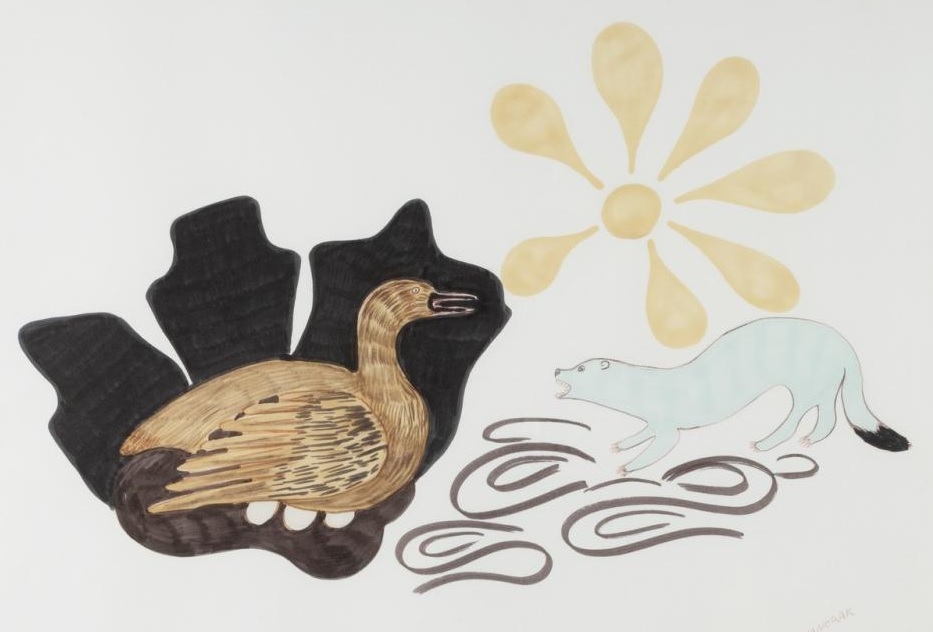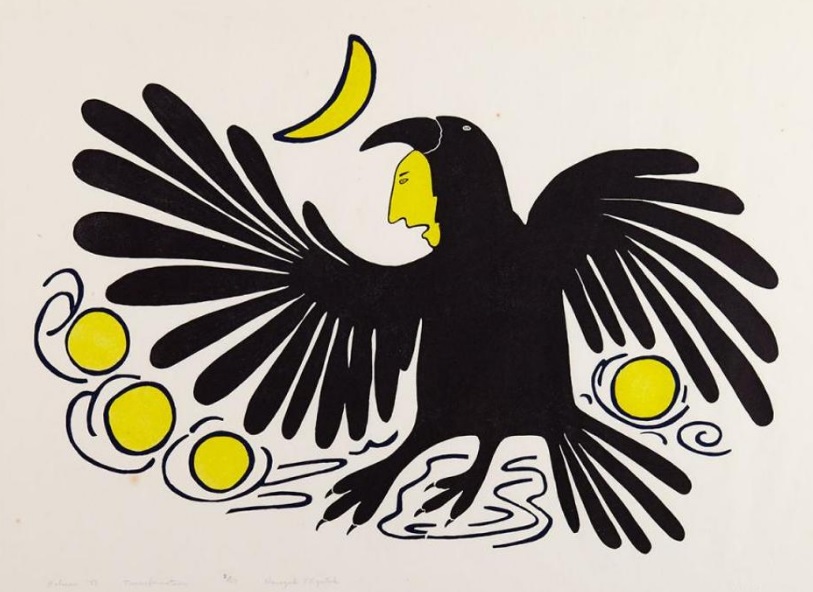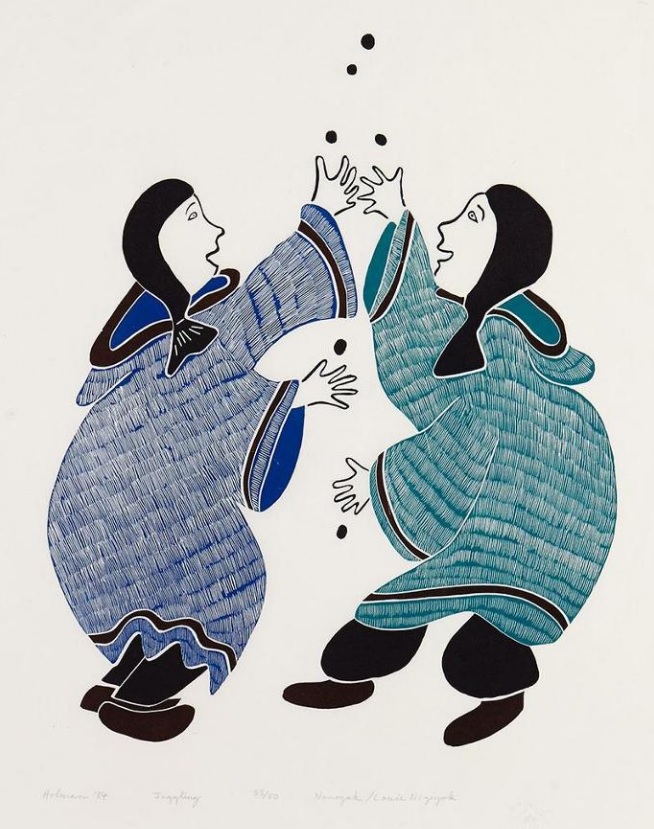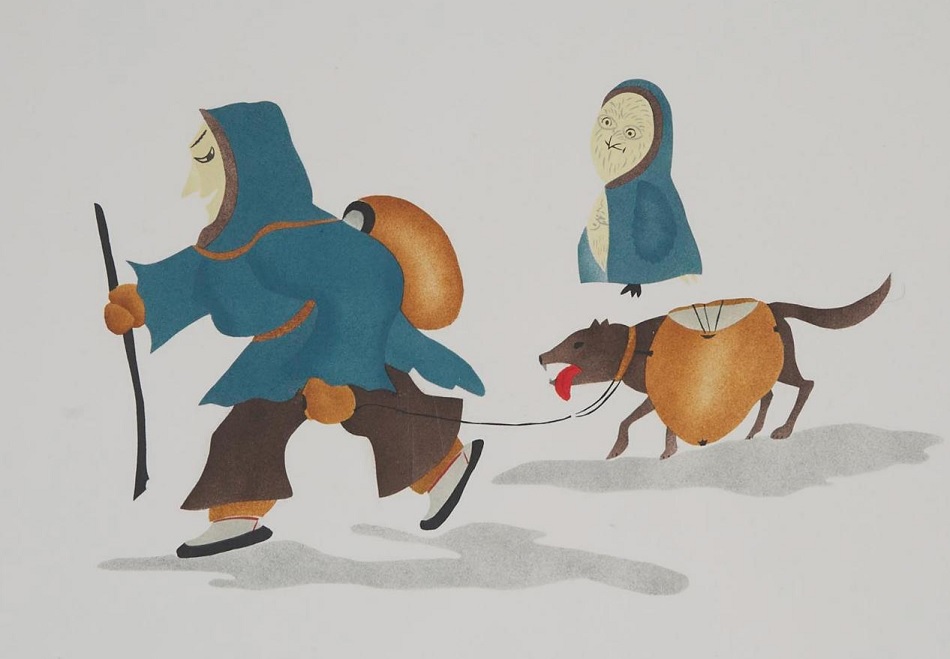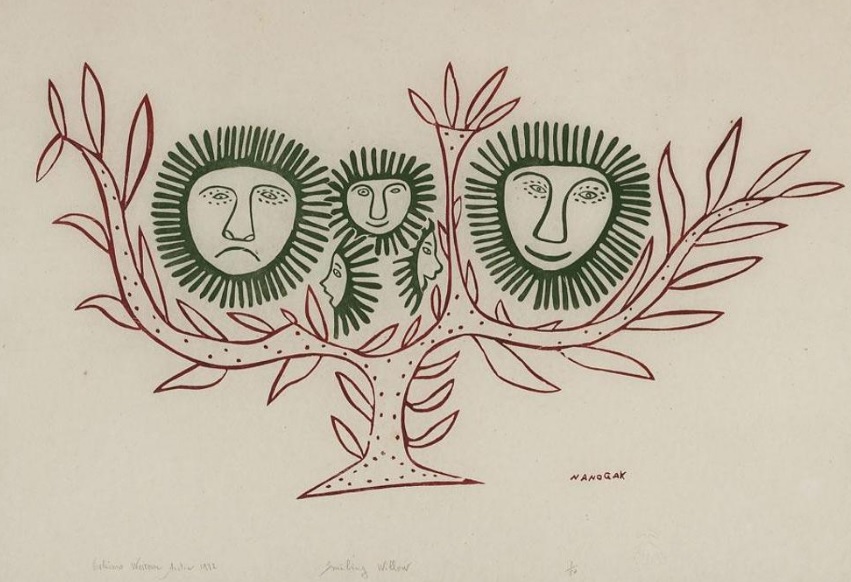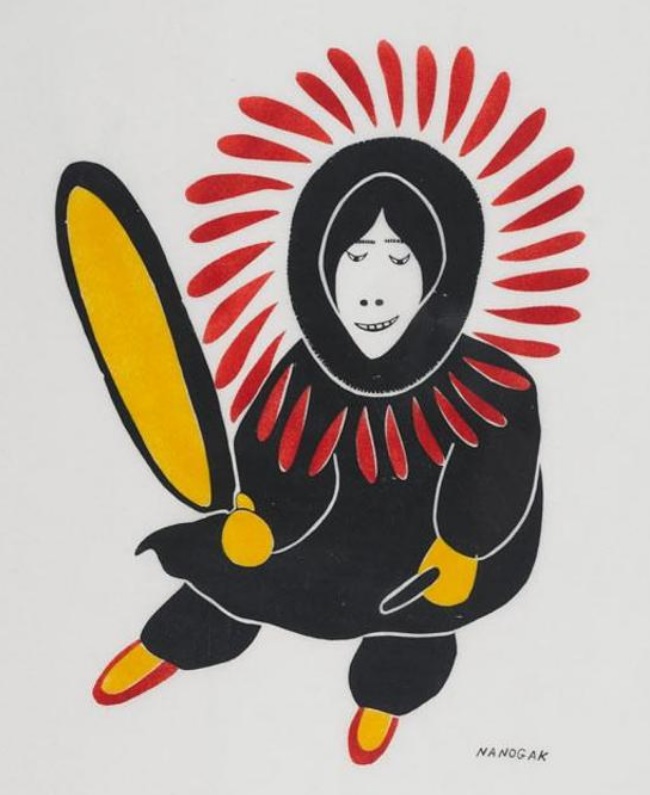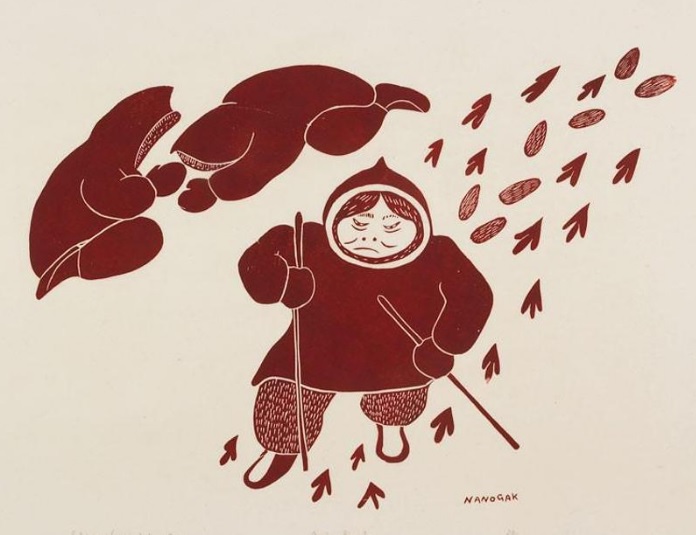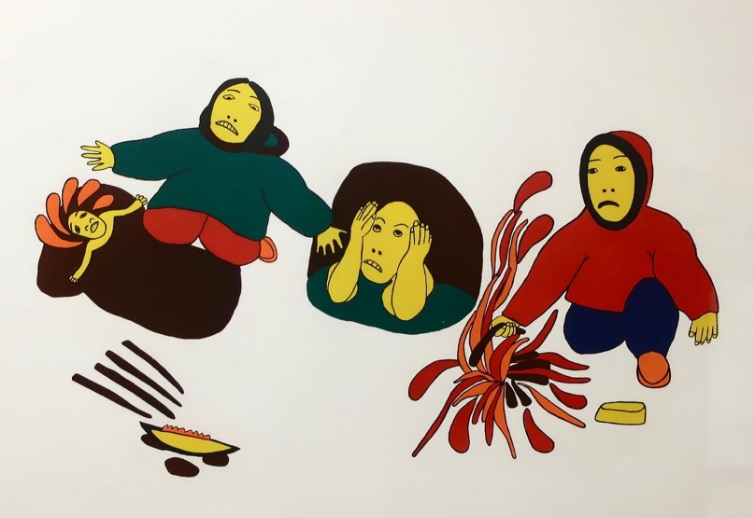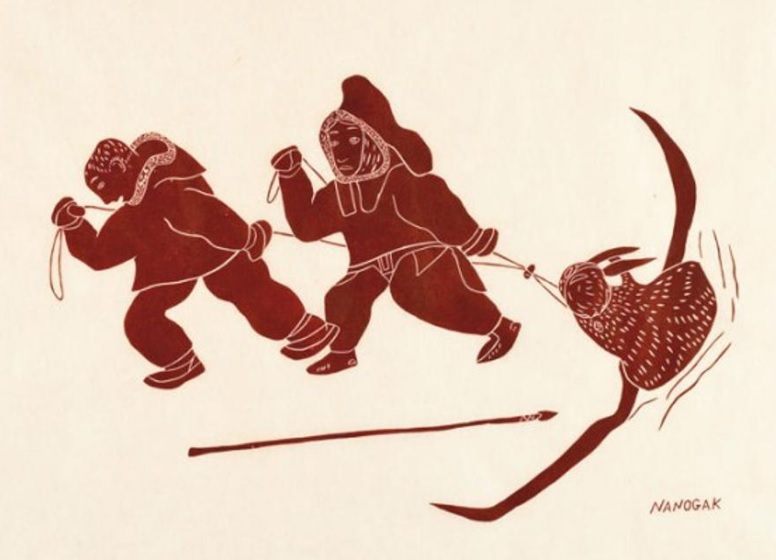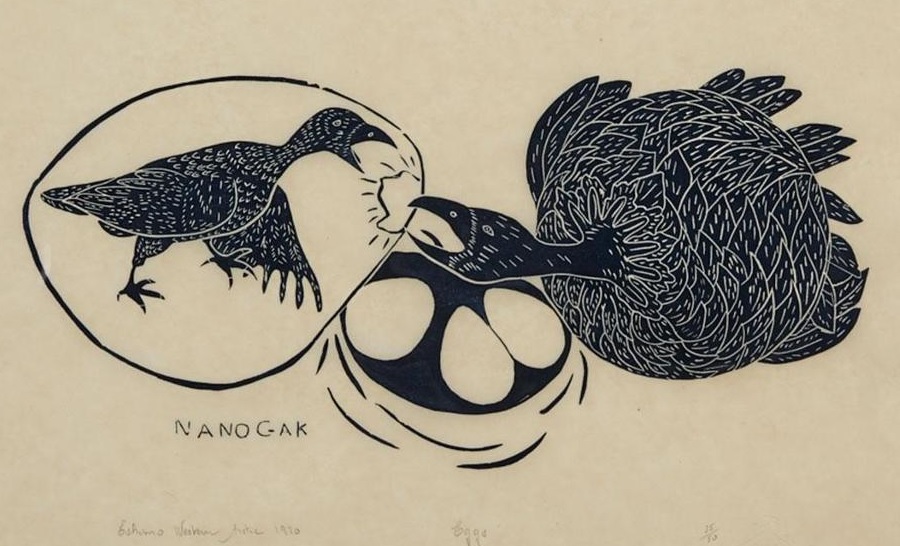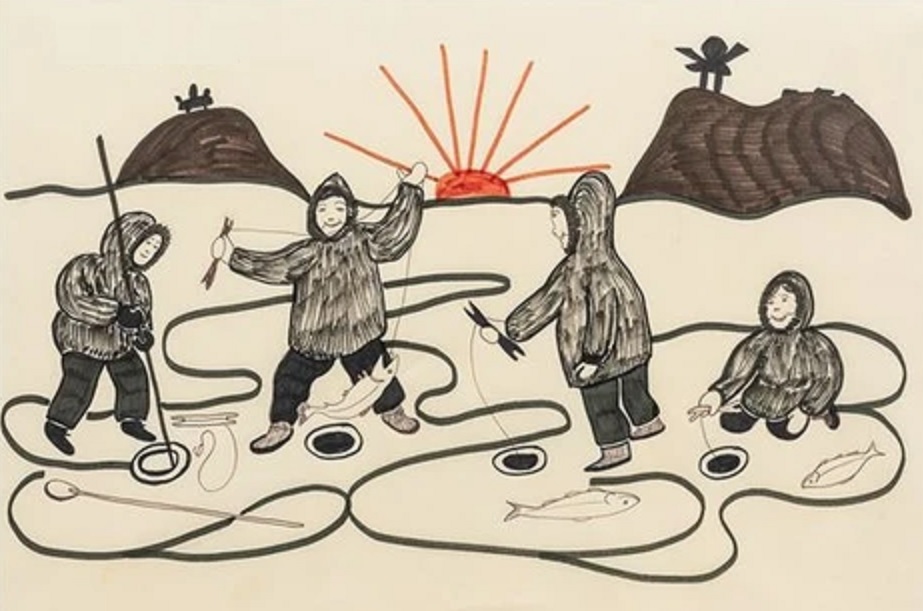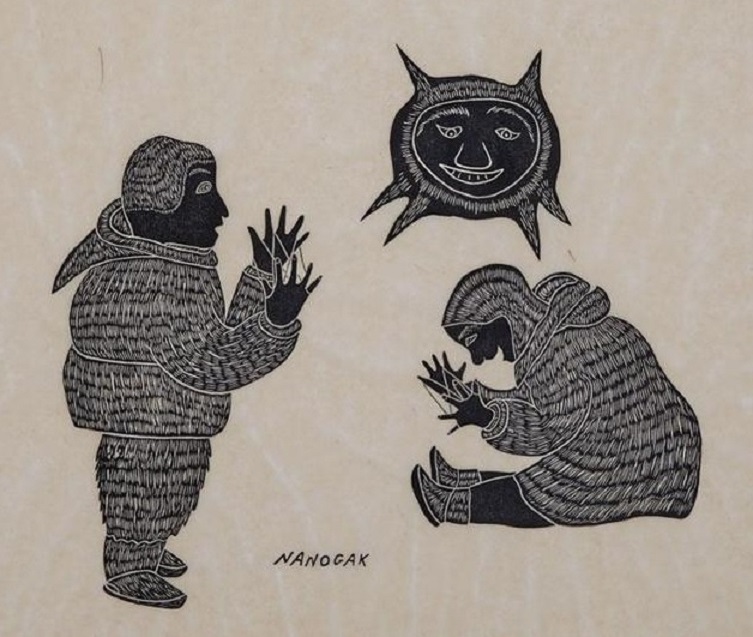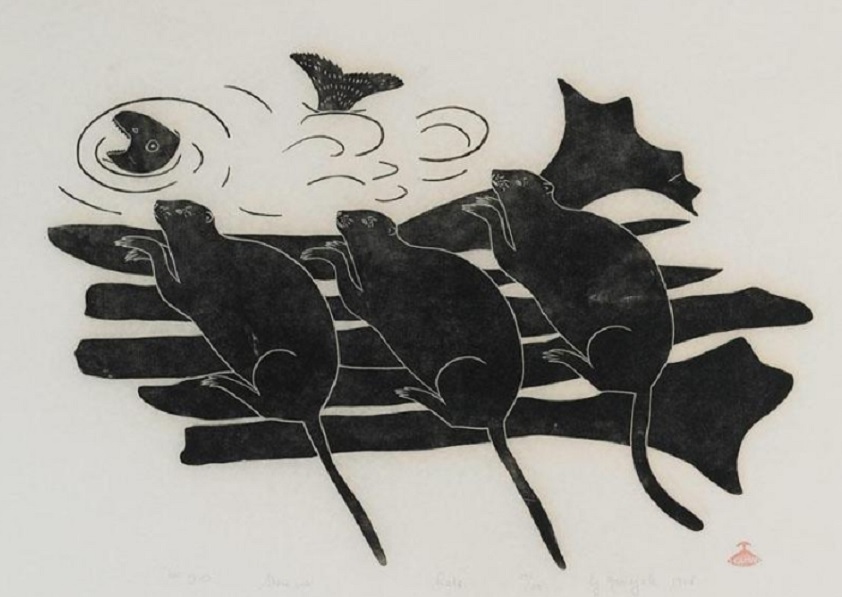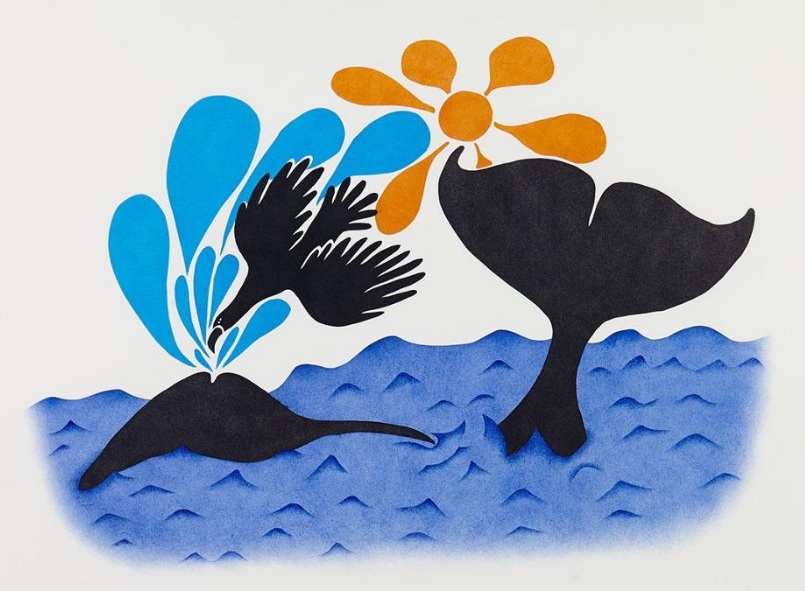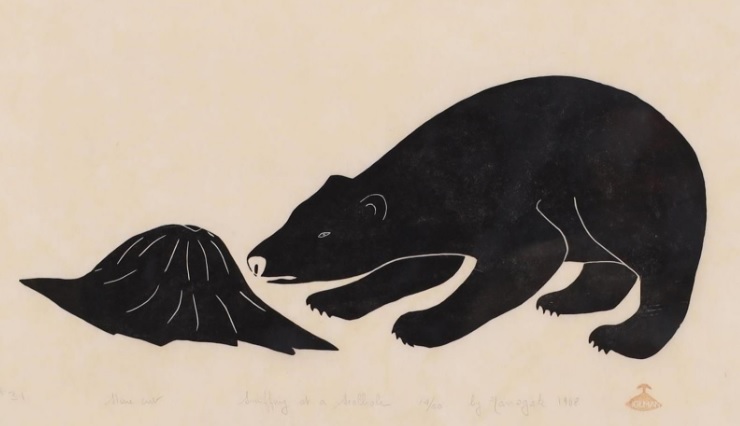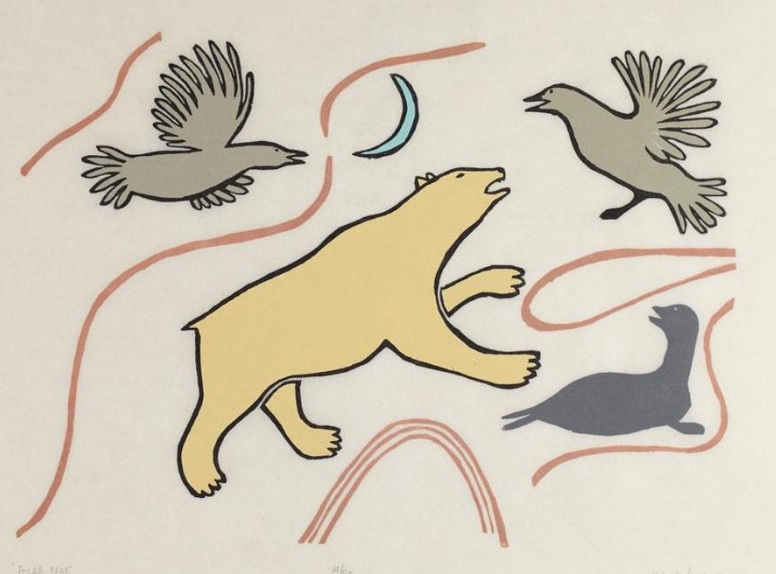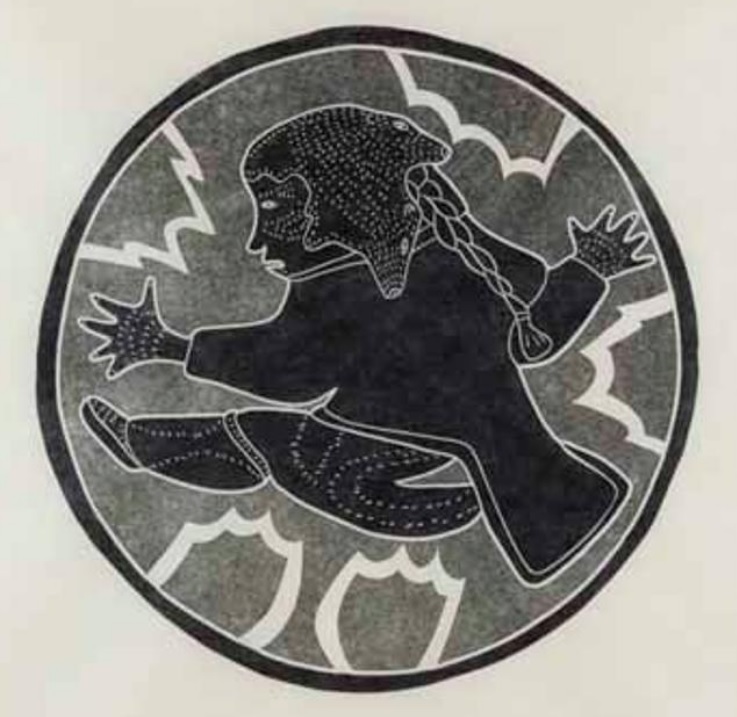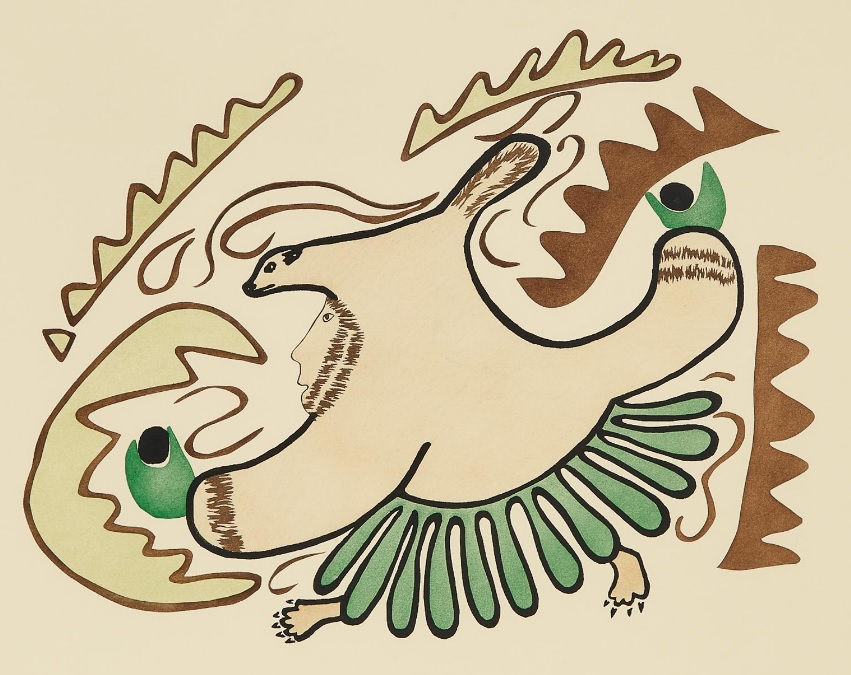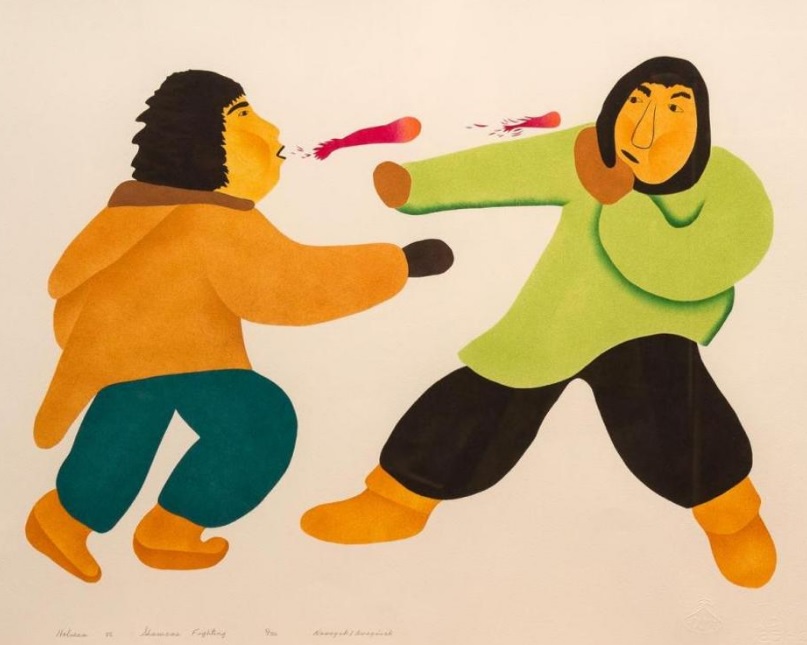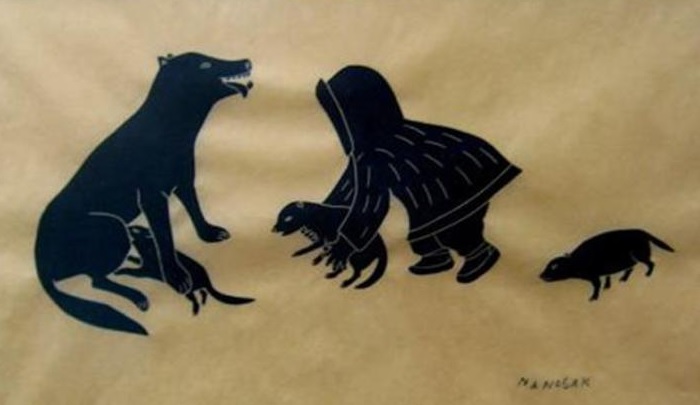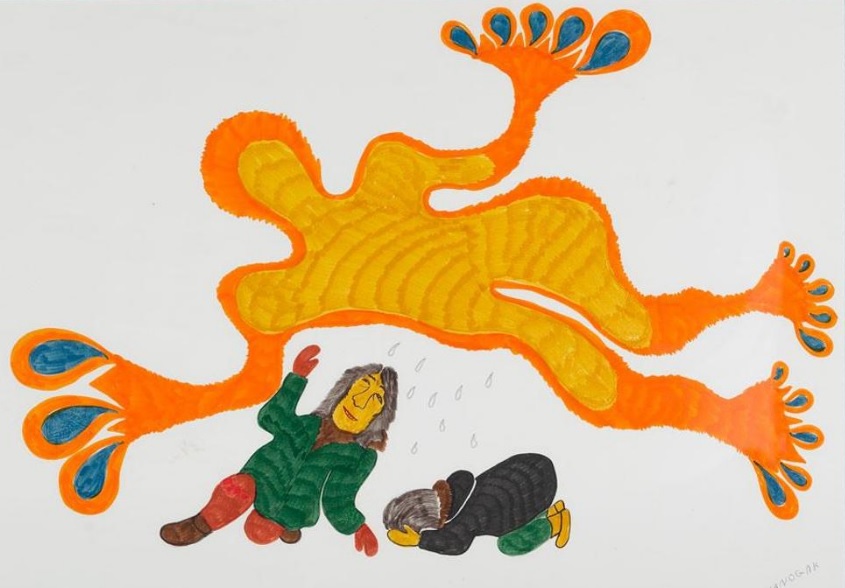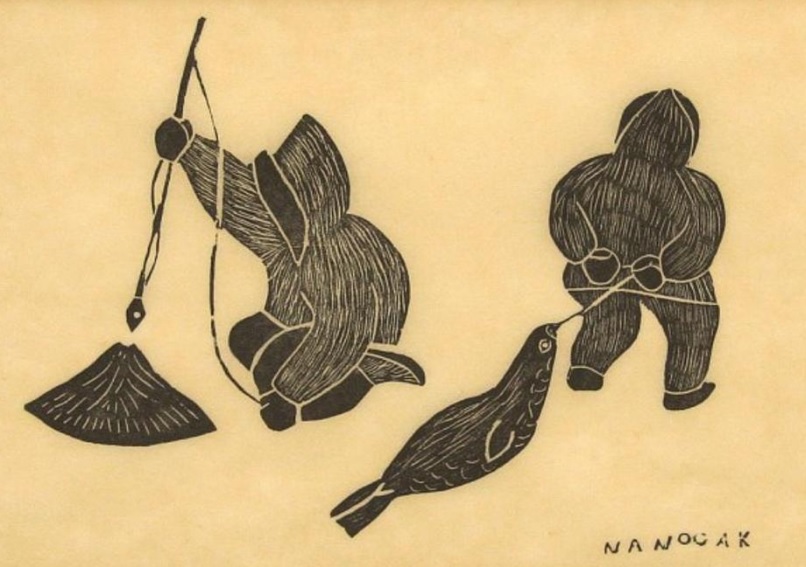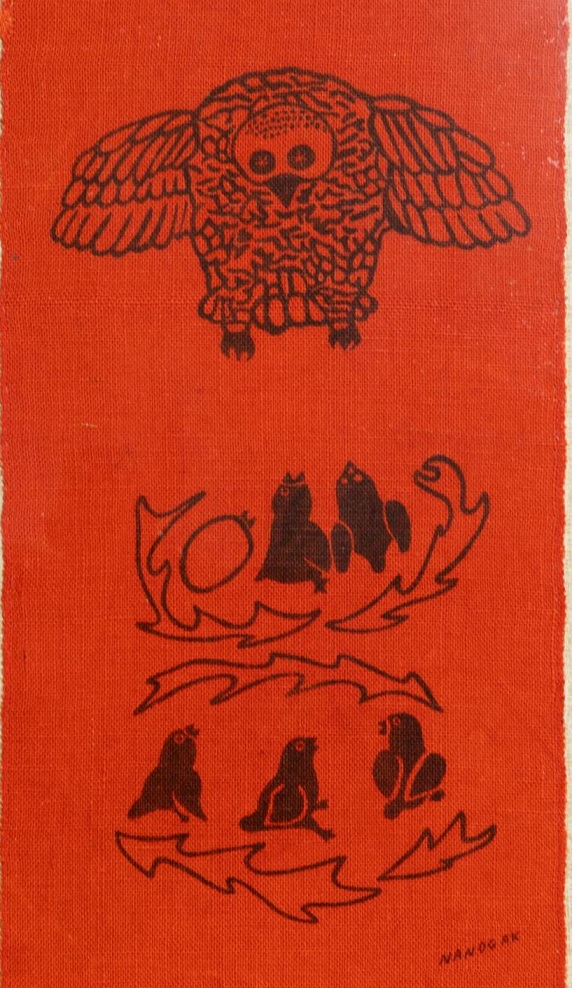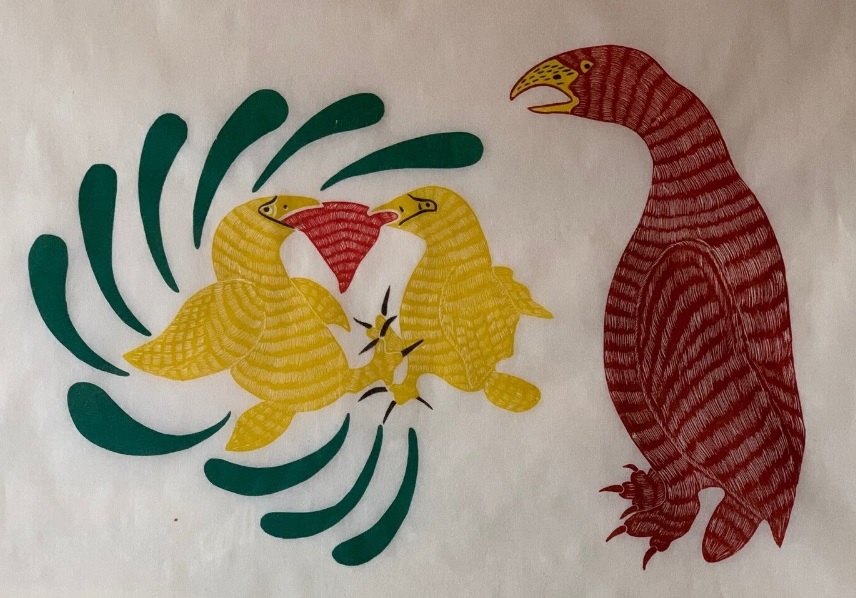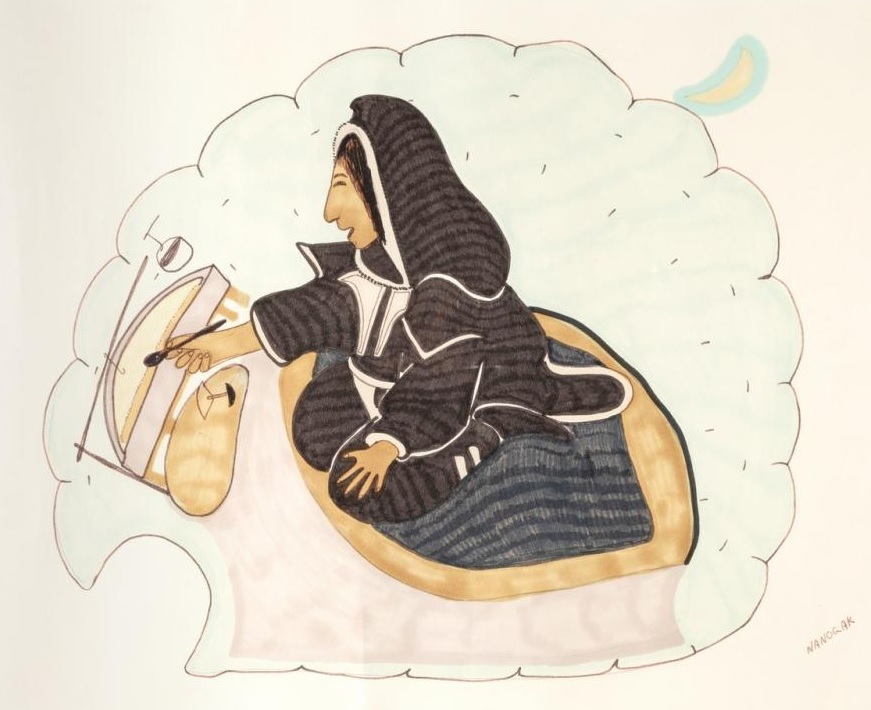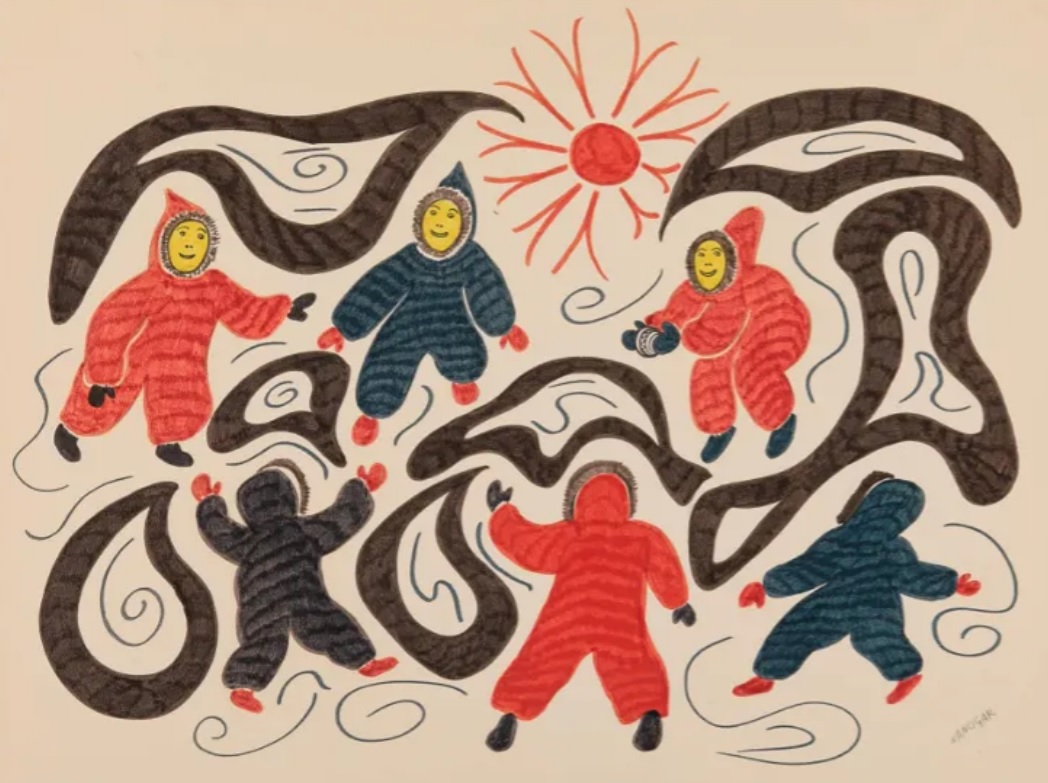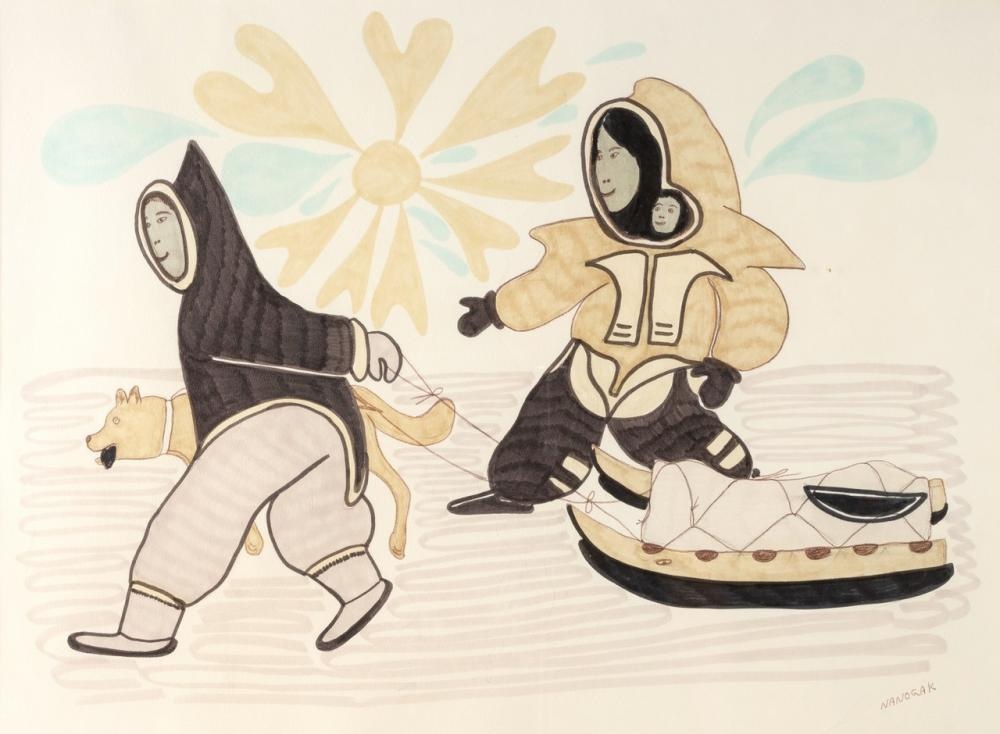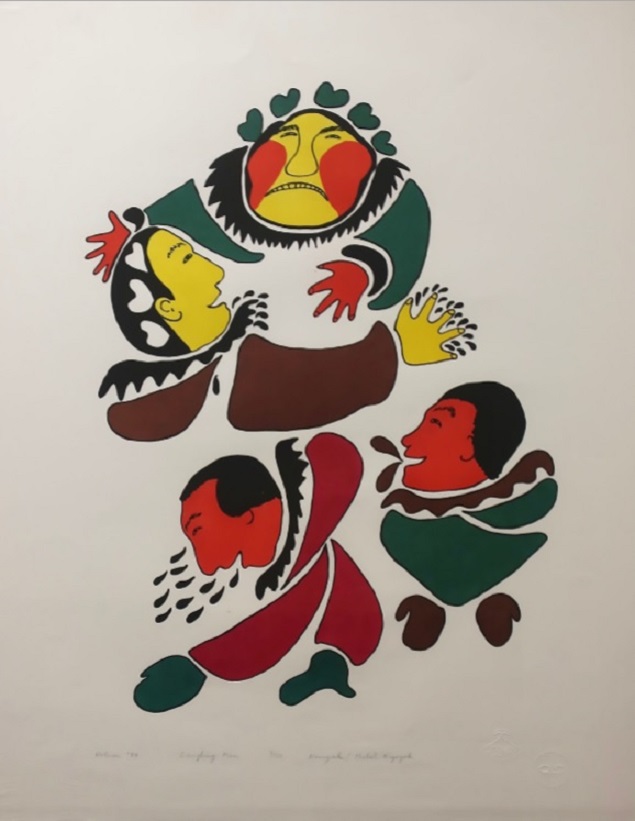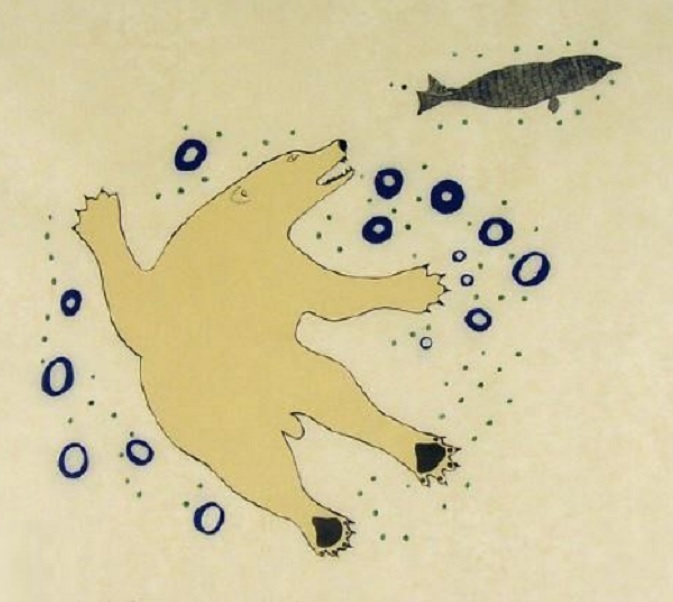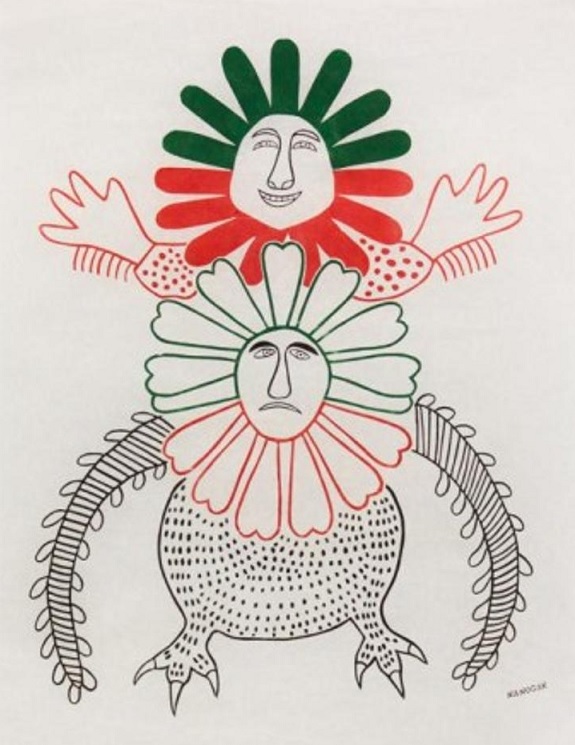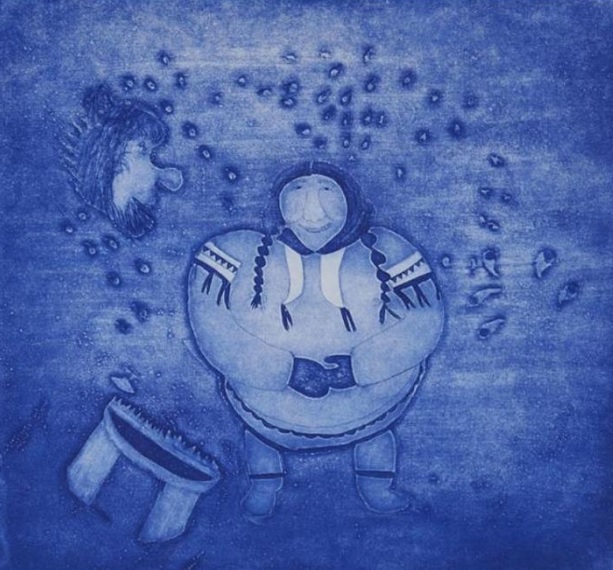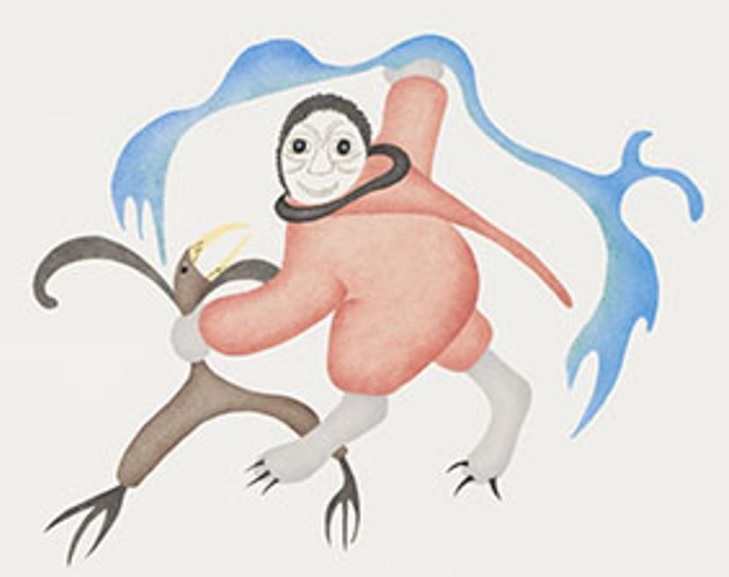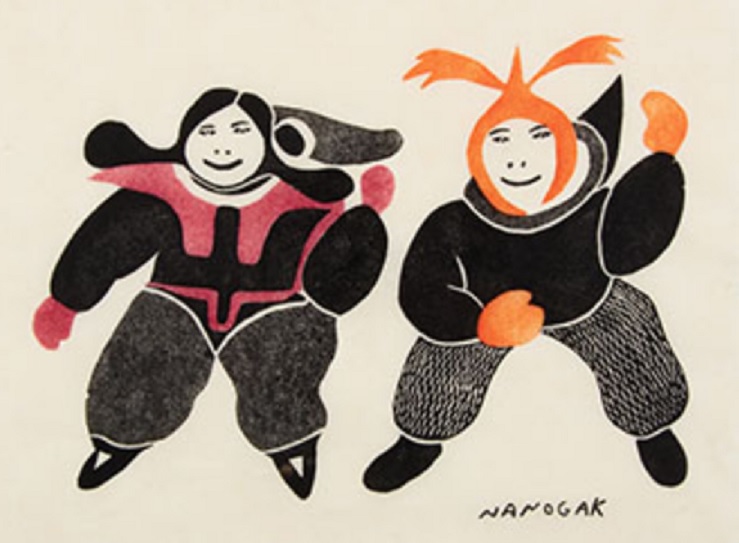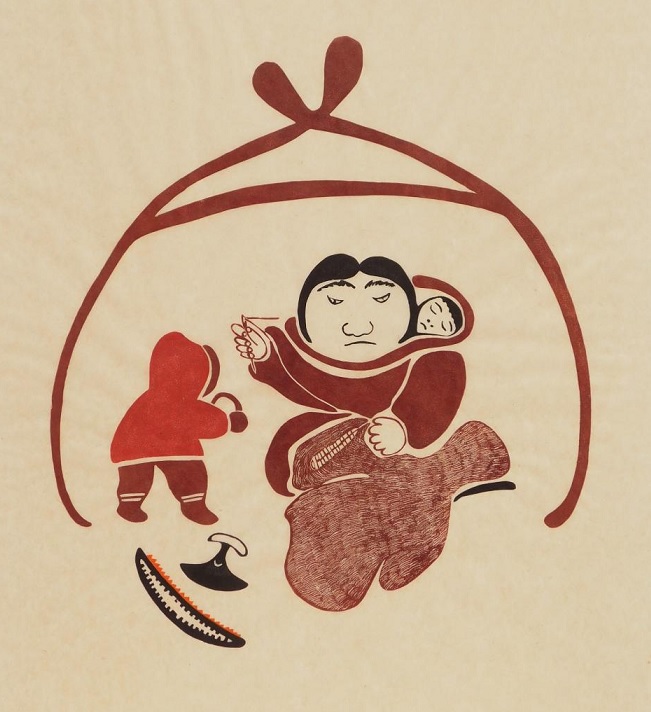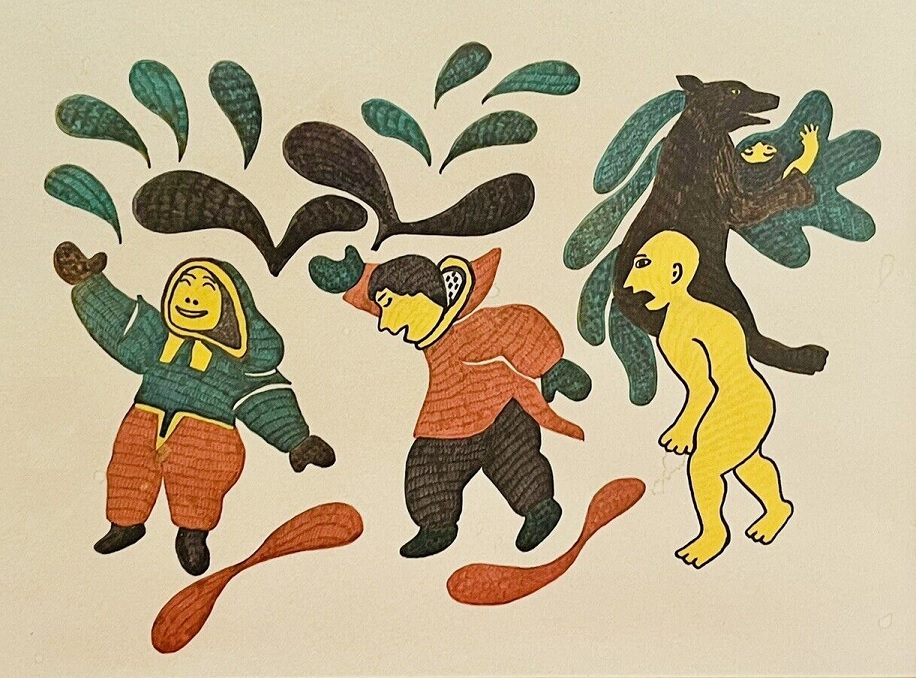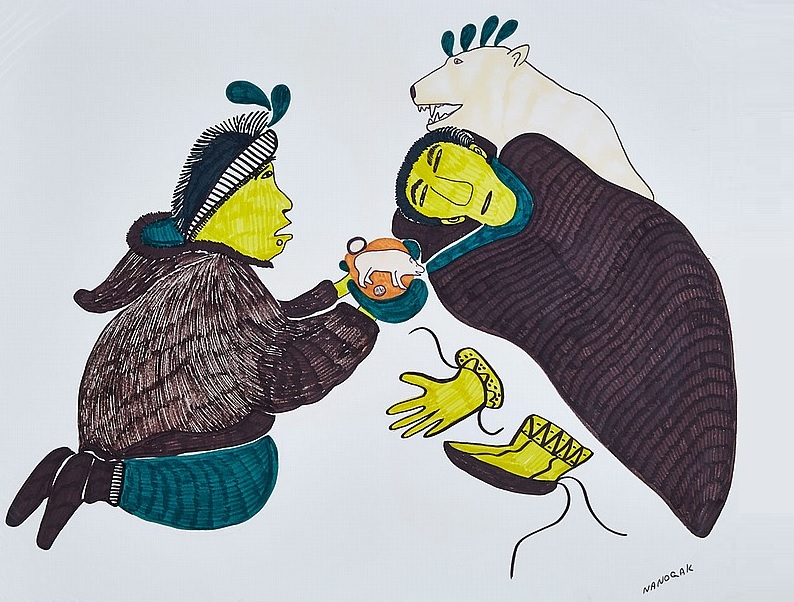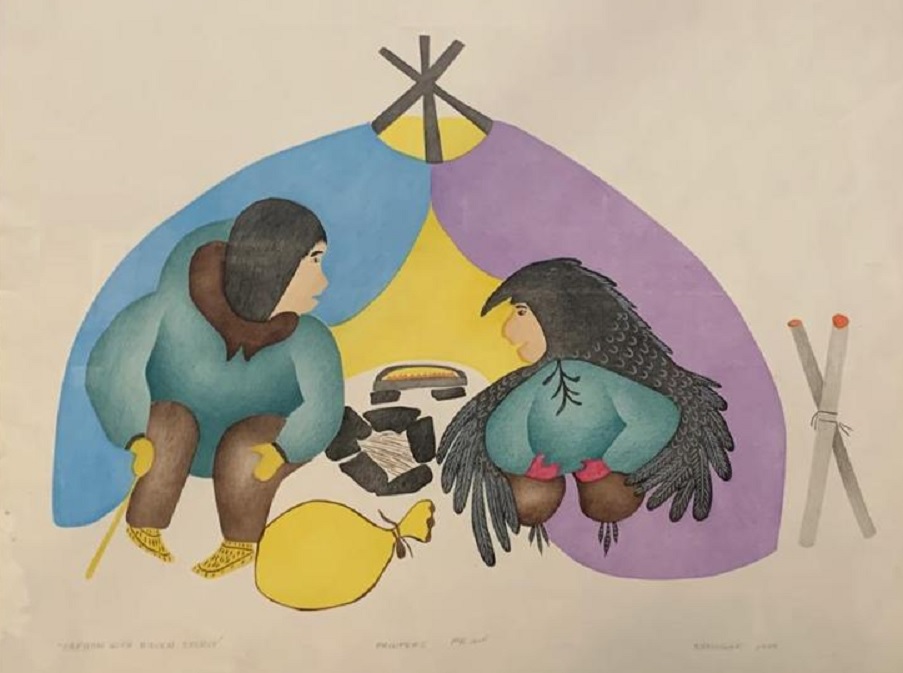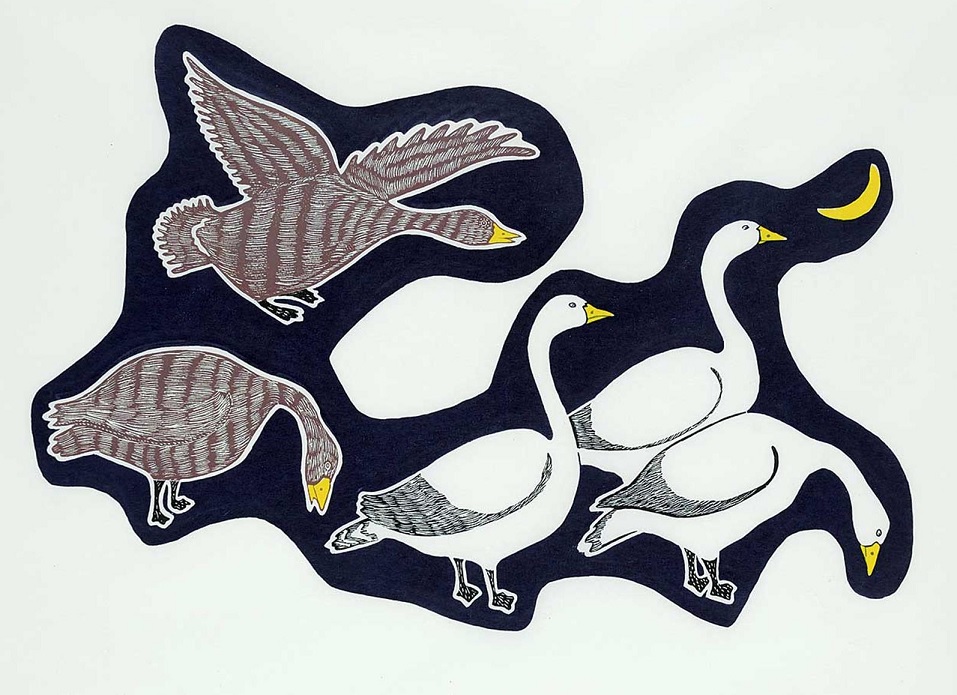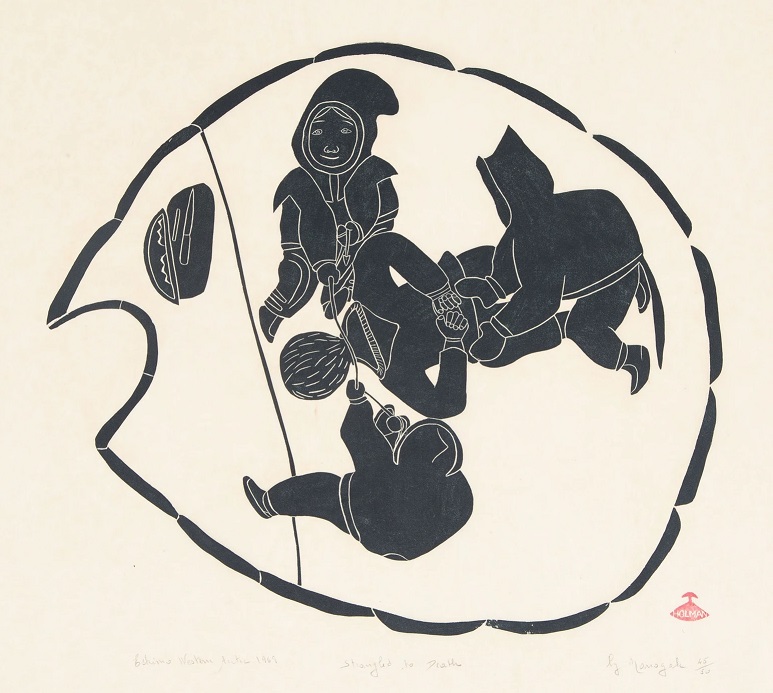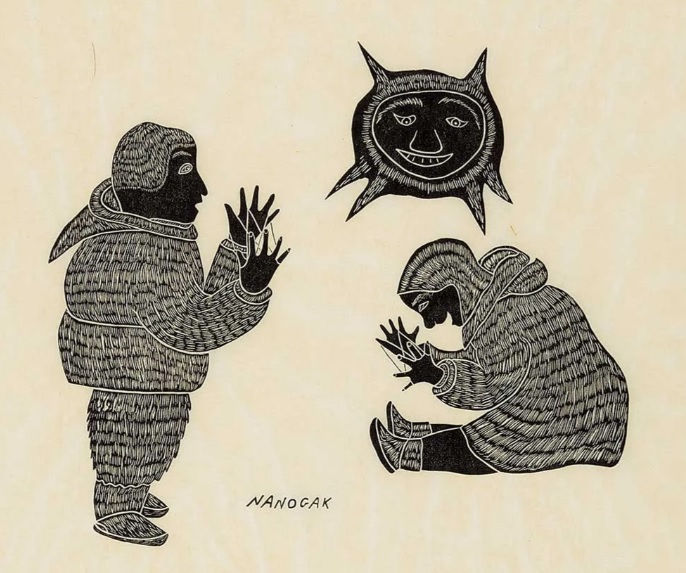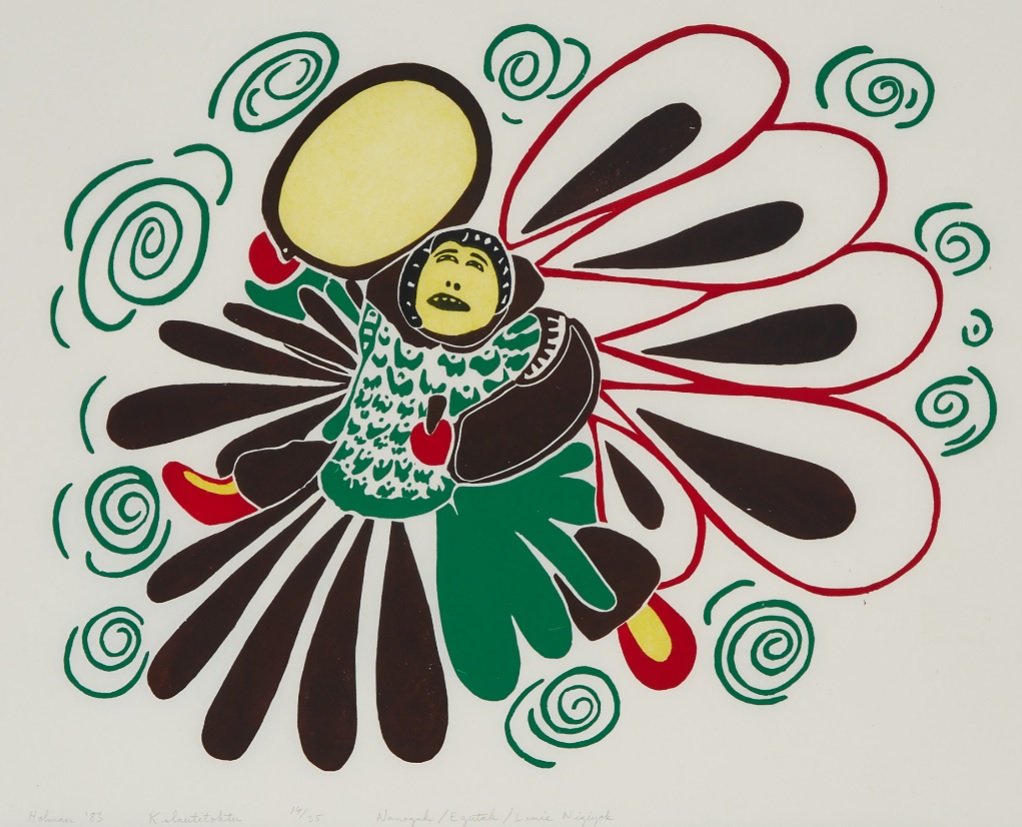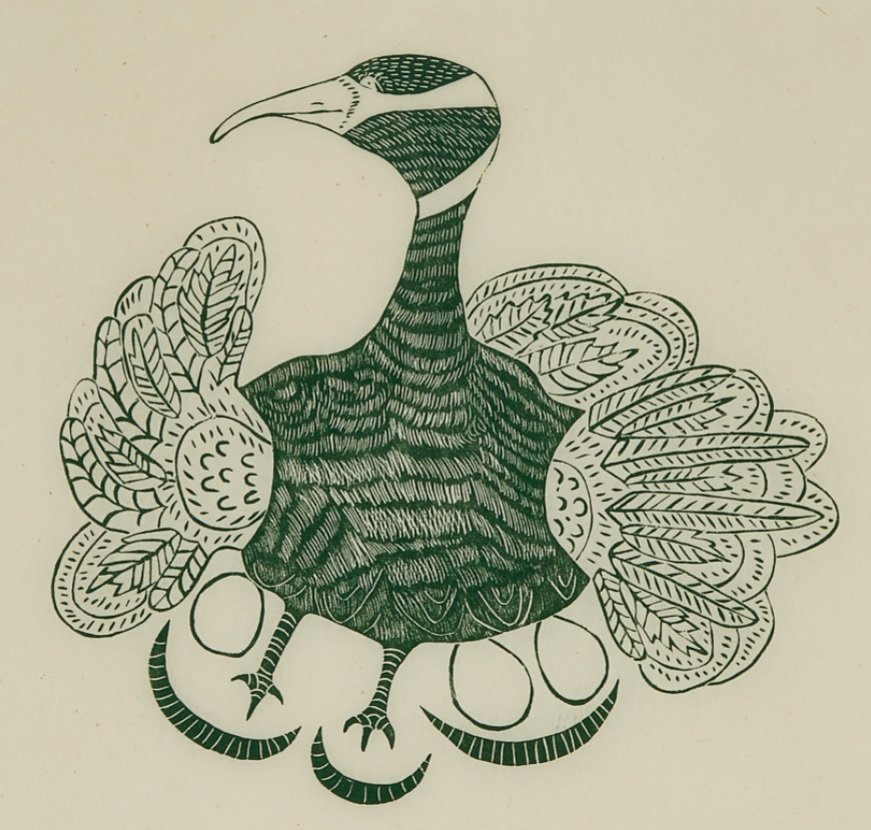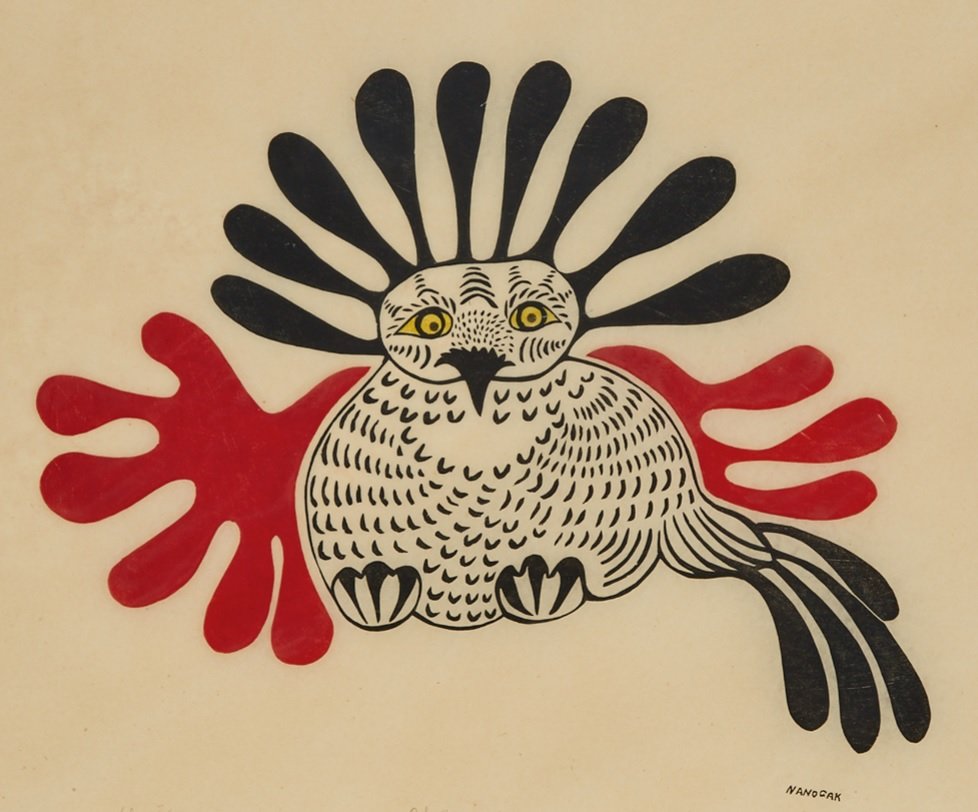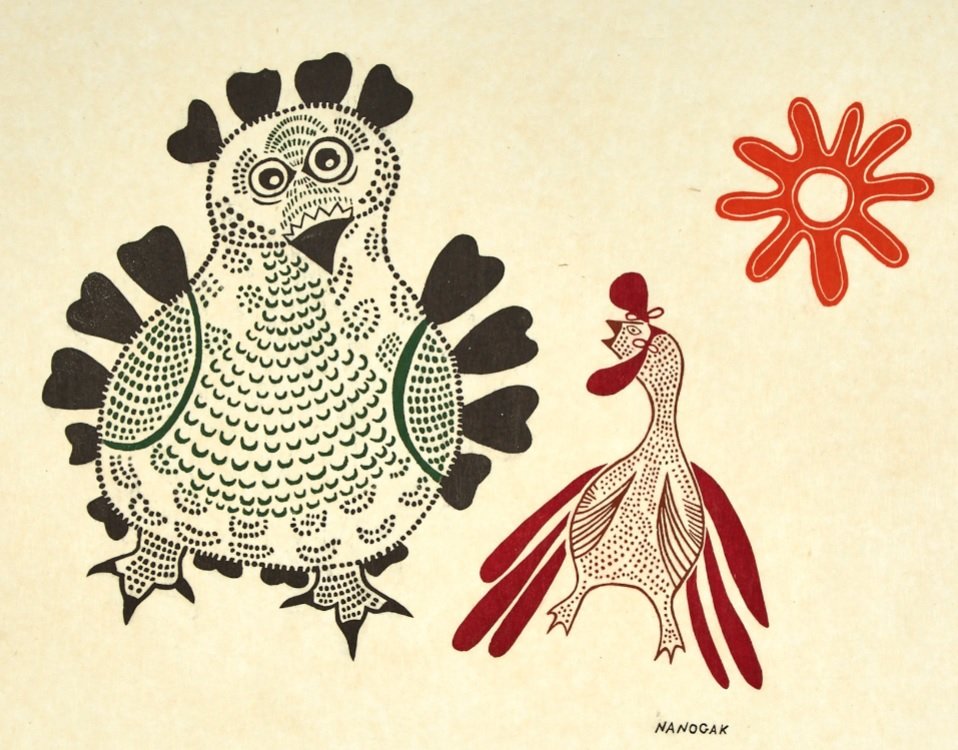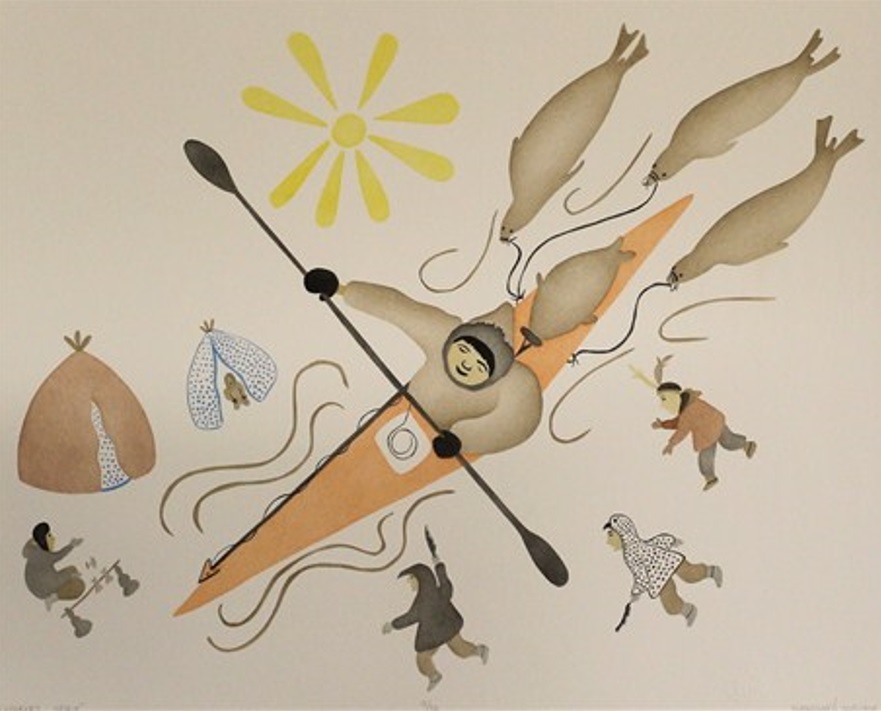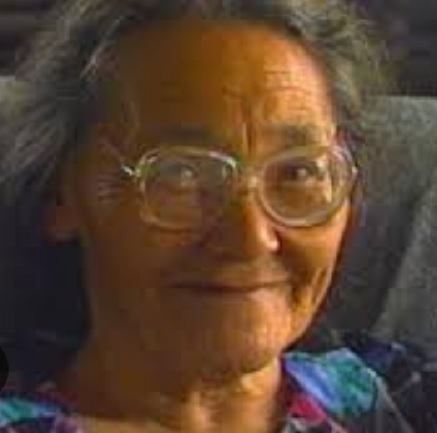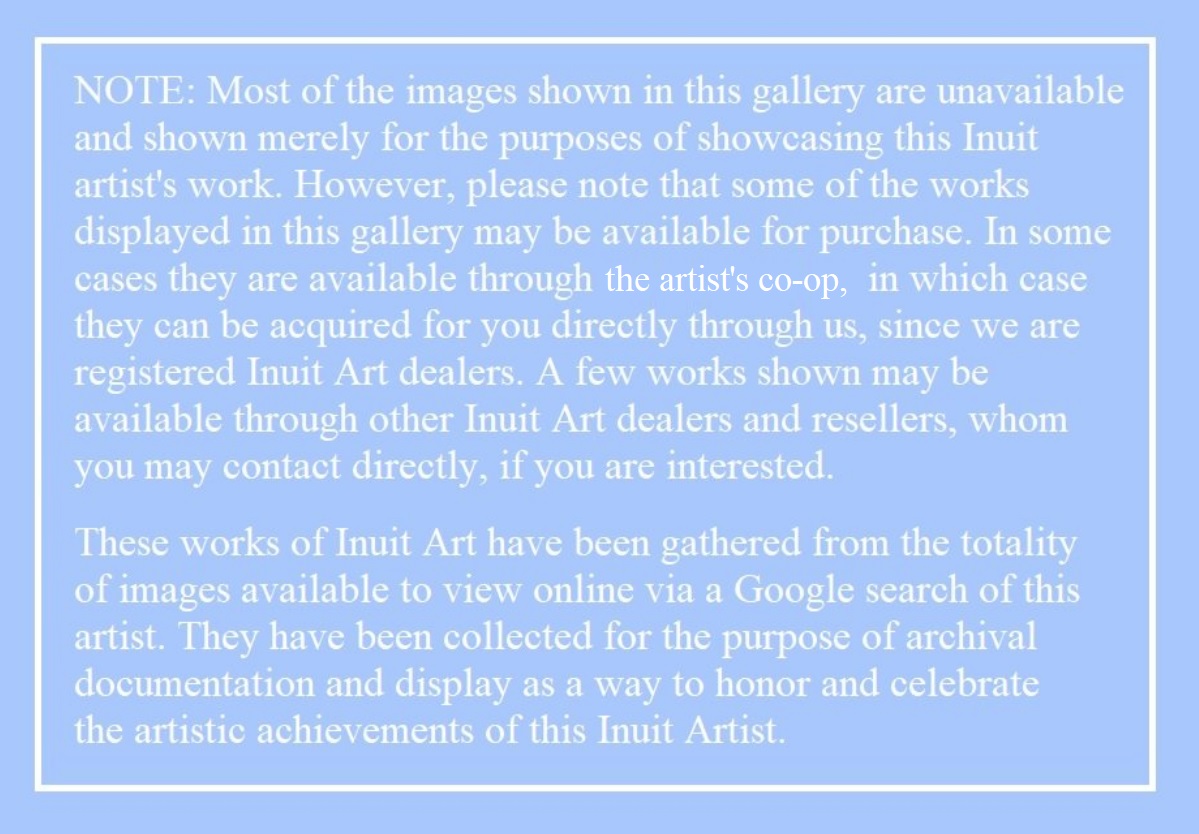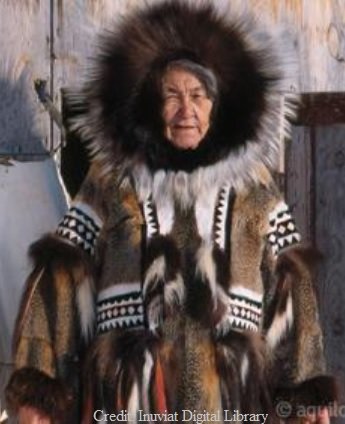
Agnes Nanogak Goose
Agnes Nanogak is known for her wonderfully unique drawings, prints, and collages of life in the arctic rendered in a personalized style all her own which may be instantly recognized. Her beautiful work was featured in a film and in two illustrated books about Inuit life, and is part of numerous prestigious permanent collections including the National Art Gallery of Canada in Ottawa, and the Amon Carter Museum of American Art, Fort Worth, TX, USA. For her artistic achievements she was also given an honorary degree from Mount Saint Vincent University, Halifax, NS in 1985.
Nanogak produced an astonishing number of drawings covering a vast range of subject matter. These works won her high esteem and an honourary degree from Mount Saint Vincent University in Halifax, in 1985. Nanogak is the first Inuit artist to receive an honorary degree from a university.
Already, over two hundred of her works have been catalogued, including 38 paper collage designs still in their air mailed box from the National Film Board of Canada. The collages were used in the making of the film The Owl Who Married a Goose: An Eskimo Legend (1974), a short directed and animated by Caroline Leaf, using sand animation based on Agnes Nanogak’s designs.
Nanogak was a prominent contributor to every print collection published by the Holman artists’ co-operative since 1967. Since 1937 Agnes Nanogak made her home in Holman, NWT, where she married William Goose, raised a large family and developed her artistic career. Her narrative prints and drawings evoked a rich variety of stories reflecting the Alaskan roots of her father and the Mackenzie Delta/Copper Eskimo culture of her mother and husband.
Agnes Nanogak illustrated 2 books of Inuit stories, Tales from the Igloo, edited and translated by Maurice Metayer (1972), and More Tales from the Igloo, which she also wrote (1986). In 1985 she received an honorary degree from Mount Saint Vincent University in Halifax.
Nanogak was born on Baillie Island, Northwest Territories, in 1925. Her father, Natkutsiak (Billy Banksland) was from Nome, Alaska, and worked as a harpoonist on whaling boats. He sailed with explorer Vilhjalmur Stefansson in his attempt to find the Northwest Passage. Natkutsiak was a skilled story teller, and instilled in Nanogak an appreciation for legends and the tradition of story telling. Nanogak’s mother, Topsy Ekiona, came from the Mackenzie Delta region, near Tuktoyaktuk. Ekiona and Natkutsiak married and travelled between Baillie Island and Banks Island, where a trading post afforded them trapping and trading opportunities. The family relocated to Sachs Harbour on Banks Island before settling at Holman, on Victoria Island, in 1934, when Nanogak was nine years old. At the time, they were the only family to reside in Holman. In 1943 Nanogak married Wallace Goose from the Tuktoyaktuk, and Kugluktuk (Coppermine) areas. They had seven children.
Nanogak was diagnosed with lung cancer in 2000. After the diagnosis, she describes feeling increased urgency to continue her work, so that she could “help people remember the stories.” Nanogak died in Holman in 2001, and in 2002 the Winnipeg Art Gallery held a solo exhibition of her works. Her work has been featured in dozens of exhibitions across Canada, the United States, and Europe. Her artwork can be found in the collections of at least fifteen institutions across Canada and the United States.
Nanogak’s father encouraged her to draw from an early age, and she was a part of the first generation of artists to provide drawings for Holman’s printmaking program, which starting in the 1960s. Her earliest drawings were completed using graphite pencils, however she opted to use colourful felt-tip pens when they became available to her in 1970. Her artwork is described as fluid, bold in colour, and having “nervous energy”. Her early works centered on themes of childhood, drum songs, and Inuit life. Many of these drawings were later translated into prints, and by the end of her career she had contributed approximately one hundred forty images to a total of twenty annual print collections. Nanogak contributed to every print collection by the Holman artists’ co-operative since 1967.
Nanogak Goose was known for creating dynamic works that captured the activity and movement of her community.
Nanogak Goose also translated oral storytelling and memories into visual scenes. Some of her work was used as a visual accompaniment to written stories such as in John MacDonald’s “Tauvijjuaq: The Great Darkness,” written for the Summer 1993 issue of Inuit Art Quarterly.
(Info taken from Inuit Art Foundation)
